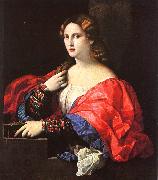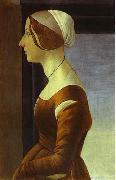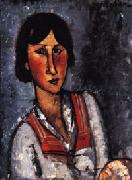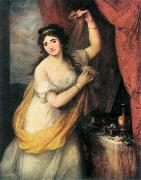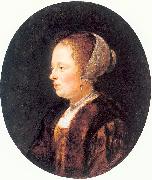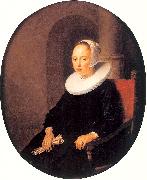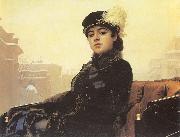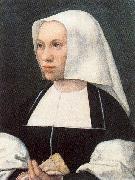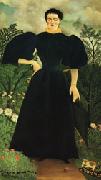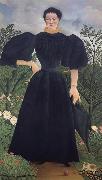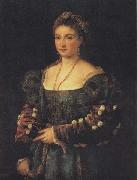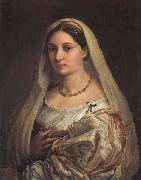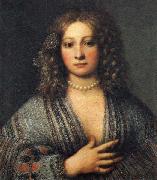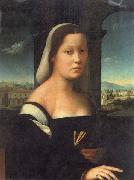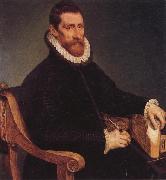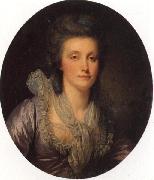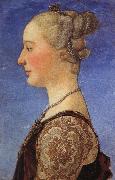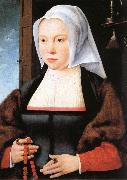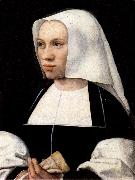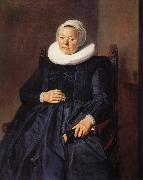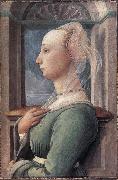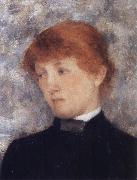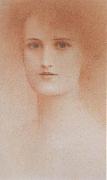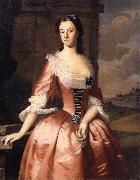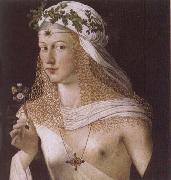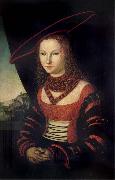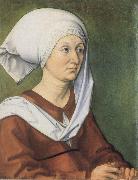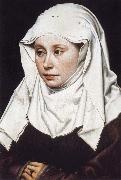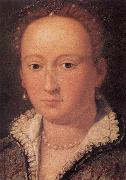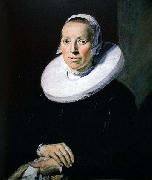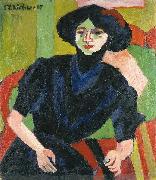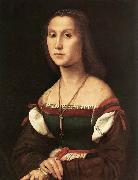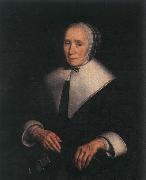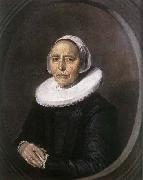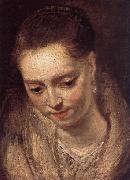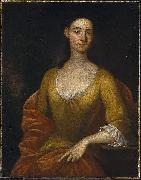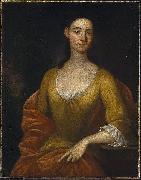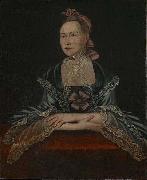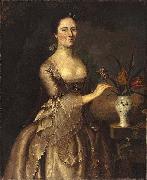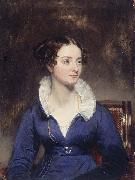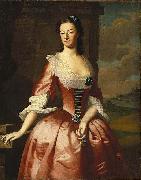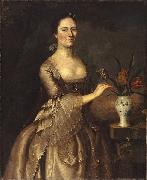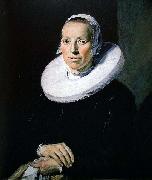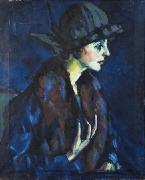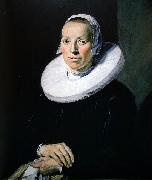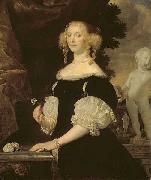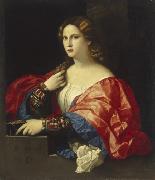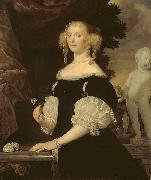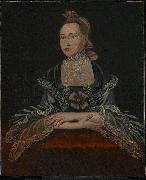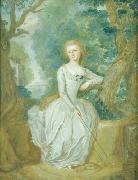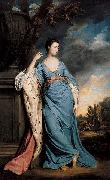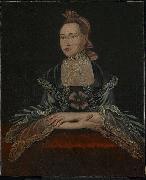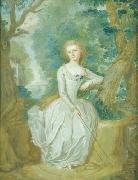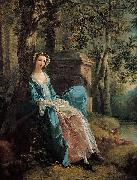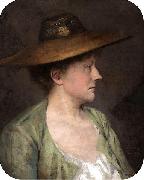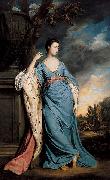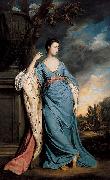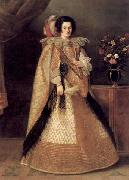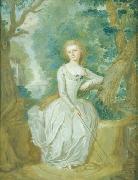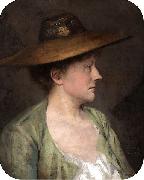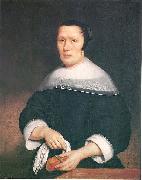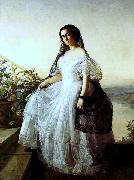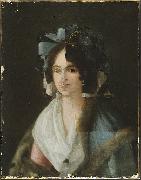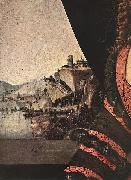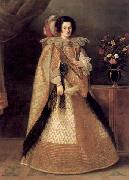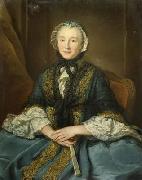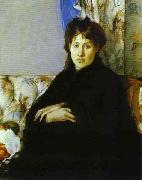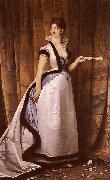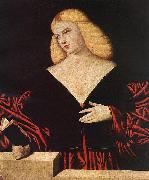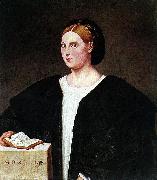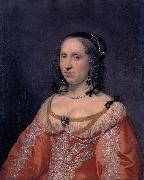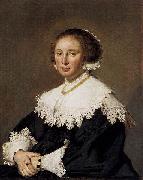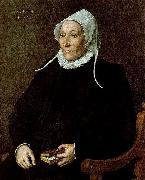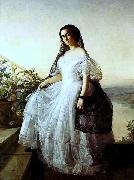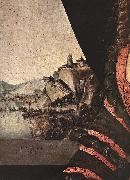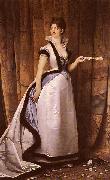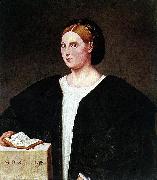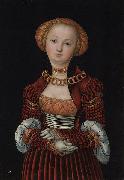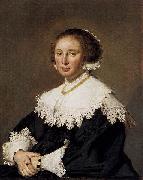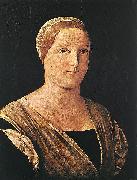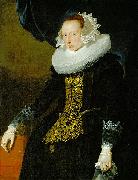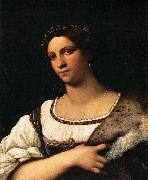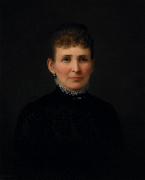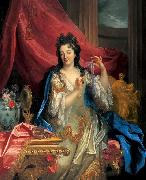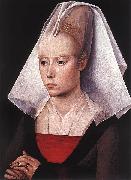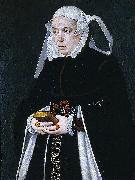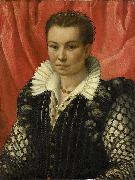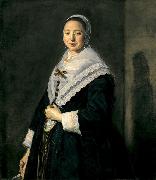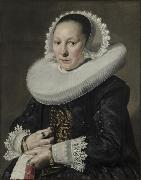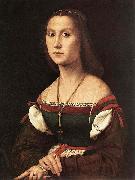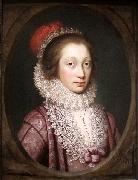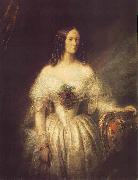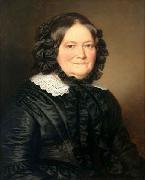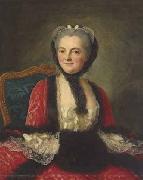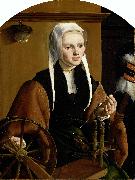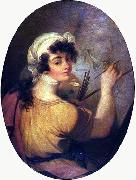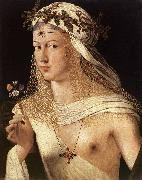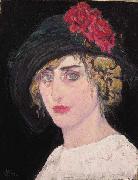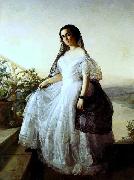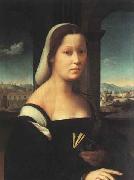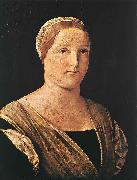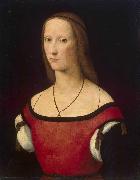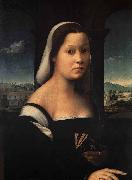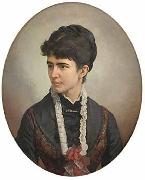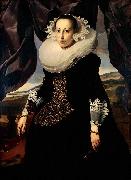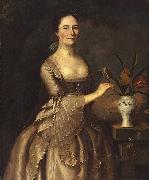Wholesale Oil Painting Reproductions No Minimum and Door to Door! |
|||||||||||
|
|
|||||||||||

|
|||||||||||
|
|
|
||||||||
All Palma Vecchio Oil Paintings |
||||||||
|
|
||||||||
|
|
||||||||
|
Artist Introduction: 1480-1528
Italian
Palma Vecchio Gallery
His birthdate is calculated on Vasari testimony (1550) that he died aged 48. By March 1510 he was in Venice, where he spent his working life. The stylistic evidence of his earliest works suggests that he was apprenticed to fellow Bergamasque artist Andrea Previtali, who had studied under Giovanni Bellini. A signed Virgin Reading (1508-10; Berlin, Gemeldegal.), which may be Palma Vecchio earliest surviving painting, is strongly reminiscent of his teacher. Previtali returned to Bergamo in 1511, and the main corpus of Palma work can be dated from this time. Palma Vecchio oeuvre reflects the change from an early to a high Renaissance conception of the human figure in secular and religious art. He specialized in certain themes that became established in the repertory of genres of the Venetian school in the generation after him. The principal of these were the wide-format SACRA CONVERSAZIONE |
||||||||
|
|
||||||||
|
Portrait of a Woman Painting ID:: 1096 |
|
|||||||
Height Width |
INS/CM Quality |
|||||||
|
X |
| |||||||
|
|
||||||||
All Sandro Botticelli Oil Paintings |
||||||||
|
|
||||||||
|
|
||||||||
|
Artist Introduction: Italian Early Renaissance Painter, 1445-1510
Italian painter and draughtsman. In his lifetime he was one of the most esteemed painters in Italy, enjoying the patronage of the leading families of Florence, in particular the Medici and their banking clients. He was summoned to take part in the decoration of the Sistine Chapel in Rome, was highly commended by diplomatic agents to Ludovico Sforza in Milan and Isabella d Este in Mantua and also received enthusiastic praise from the famous mathematician Luca Pacioli and the humanist poet Ugolino Verino. By the time of his death, however, Botticelli s reputation was already waning. He was overshadowed first by the advent of what Vasari called the maniera devota, a new style by Perugino, Francesco Francia and the young Raphael, whose new and humanly affective sentiment, infused atmospheric effects and sweet colourism took Italy by storm; he was then eclipsed with the establishment immediately afterwards of the High Renaissance style, which Vasari called the modern manner, in the paintings of Michelangelo and the mature works of Raphael in the Vatican. From that time his name virtually disappeared until the reassessment of his reputation that gathered momentum in the 1890s |
||||||||
|
|
||||||||
|
|
Portrait of a Woman Painting ID:: 10003 |
1475Tempera on panel
Palazzo Pitti, Galleria
Palatina, Florence, |
||||||
Height Width |
INS/CM Quality |
|||||||
|
X |
| |||||||
|
|
||||||||
All Amedeo Modigliani Oil Paintings |
||||||||
|
|
||||||||
|
|
||||||||
|
Artist Introduction: Italian Expressionist Painter and Sculptor, 1884-1920
Amedeo Clemente Modigliani (July 12, 1884 ?C January 24, 1920) was an Italian artist of Jewish heritage, practicing both painting and sculpture, who pursued his career for the most part in France. Modigliani was born in Livorno (historically referred to in English as Leghorn), in northwestern Italy and began his artistic studies in Italy before moving to Paris in 1906. Influenced by the artists in his circle of friends and associates, by a range of genres and art movements, and by primitive art, Modigliani's œuvre was nonetheless unique and idiosyncratic. He died in Paris of tubercular meningitis, exacerbated by poverty, overworking, and an excessive use of alcohol and narcotics, at the age of 35. |
||||||||
|
|
||||||||
|
|
Portrait of a Woman Painting ID:: 10621 |
1918, oil on canvas, 24 x 18 1/8 ins (61x46 cm). Denver Art Museum, Charles Francis Hendrie Memorial Collection. |
||||||
Height Width |
INS/CM Quality |
|||||||
|
X |
| |||||||
|
|
||||||||
All KAUFFMANN, Angelica Oil Paintings |
||||||||
|
|
||||||||
|
|
||||||||
|
Artist Introduction: Swiss Neoclassical Painter, 1741-1807
Swiss-born Italian painter. She began studying art in Italy as a child, showing great precocity, and in 1766 her friend Joshua Reynolds took her to London. There she became known for her decorative work with architects such as Robert Adam. Her pastoral compositions incorporate delicate and graceful depictions of gods and goddesses; though her paintings are Rococo in tone and approach, her figures are Neoclassical (see Classicism and Neoclassicism). Her portraits of female sitters are among her finest works. |
||||||||
|
|
||||||||
|
|
Portrait of a Woman Painting ID:: 7720 |
1795
Oil on canvas, 131 x 103 cm
Museum of Fine Arts, Budapest |
||||||
Height Width |
INS/CM Quality |
|||||||
|
X |
| |||||||
|
|
||||||||
All DOU, Gerrit Oil Paintings |
||||||||
|
|
||||||||
|
|
||||||||
|
Artist Introduction: Dutch Baroque Era Painter, 1613-1675
Dutch painter. The first and most famous member of the group of artists referred to as the LEIDEN 'FINE' PAINTERS, he specialized in small-format paintings, the details and surfaces of which are carefully observed and meticulously rendered. He was greatly praised as a painter of artificial light by Samuel van Hoogstraten in 1678, and he was responsible for popularizing both the night scene and the 'niche' format, pictorial devices ultimately derived from the art of his famous master, Rembrandt.
|
||||||||
|
|
||||||||
|
|
Portrait of a Woman Painting ID:: 18997 |
1635-40
Oil on panel
Private collection. |
||||||
Height Width |
INS/CM Quality |
|||||||
|
X |
| |||||||
|
|
||||||||
All DOU, Gerrit Oil Paintings |
||||||||
|
|
||||||||
|
|
||||||||
|
Artist Introduction: Dutch Baroque Era Painter, 1613-1675
Dutch painter. The first and most famous member of the group of artists referred to as the LEIDEN 'FINE' PAINTERS, he specialized in small-format paintings, the details and surfaces of which are carefully observed and meticulously rendered. He was greatly praised as a painter of artificial light by Samuel van Hoogstraten in 1678, and he was responsible for popularizing both the night scene and the 'niche' format, pictorial devices ultimately derived from the art of his famous master, Rembrandt.
|
||||||||
|
|
||||||||
|
|
Portrait of a Woman Painting ID:: 19001 |
1642-46
Oil on panel
Aurora Art Fund |
||||||
Height Width |
INS/CM Quality |
|||||||
|
X |
| |||||||
|
|
||||||||
All Kramskoy, Ivan Nikolaevich Oil Paintings |
||||||||
|
|
||||||||
|
|
||||||||
|
Artist Introduction: Russian Painter, 1837-1887 |
||||||||
|
|
||||||||
|
|
Portrait of a Woman Painting ID:: 19120 |
1883, oil on canvas, The Tretyakov Gallery, Moscow. |
||||||
Height Width |
INS/CM Quality |
|||||||
|
X |
| |||||||
|
|
||||||||
All Orlandi, Deodato Oil Paintings |
||||||||
|
|
||||||||
|
|
||||||||
|
Artist Introduction: Flemish Northern Renaissance Painter, ca.1488-1541 |
||||||||
|
|
||||||||
|
|
Portrait of a Woman Painting ID:: 19682 |
Oil on panel
Galleria degli Uffizi, Florence. |
||||||
Height Width |
INS/CM Quality |
|||||||
|
X |
| |||||||
|
|
||||||||
All Henri Rousseau Oil Paintings |
||||||||
|
|
||||||||
|
|
||||||||
|
Artist Introduction: French
1844-1910
Henri Rousseau Locations
He was born in Laval in the Loire Valley into the family of a plumber. He attended Laval High School as a day student and then as a boarder, after his father became a debtor and his parents had to leave the town upon the seizure of their house. He was mediocre in some subjects at the high school but won prizes for drawing and music. He worked for a lawyer and studied law, but "attempted a small perjury and sought refuge in the army," serving for four years, starting in 1863. With his father's death, Rousseau moved to Paris in 1868 to support his widowed mother as a government employee. In 1871, he was promoted to the toll collector's office in Paris as a tax collector. He started painting seriously in his early forties, and by age 49 he retired from his job to work on his art. His wife died in 1888 and he later remarried.
Rousseau claimed he had "no teacher other than nature", although he admitted he had received "some advice" from two established Academic painters, Felix Auguste-Clement and Jean-Leon Gerome. Essentially he was self-taught and is considered to be a naive or primitive painter. |
||||||||
|
|
||||||||
|
|
Portrait of a Woman Painting ID:: 11883 |
ca 1897
6'6'' x 3' 9''(198 x 114 cm) |
||||||
Height Width |
INS/CM Quality |
|||||||
|
X |
| |||||||
|
|
||||||||
All Henri Rousseau Oil Paintings |
||||||||
|
|
||||||||
|
|
||||||||
|
Artist Introduction: French
1844-1910
Henri Rousseau Locations
He was born in Laval in the Loire Valley into the family of a plumber. He attended Laval High School as a day student and then as a boarder, after his father became a debtor and his parents had to leave the town upon the seizure of their house. He was mediocre in some subjects at the high school but won prizes for drawing and music. He worked for a lawyer and studied law, but "attempted a small perjury and sought refuge in the army," serving for four years, starting in 1863. With his father's death, Rousseau moved to Paris in 1868 to support his widowed mother as a government employee. In 1871, he was promoted to the toll collector's office in Paris as a tax collector. He started painting seriously in his early forties, and by age 49 he retired from his job to work on his art. His wife died in 1888 and he later remarried.
Rousseau claimed he had "no teacher other than nature", although he admitted he had received "some advice" from two established Academic painters, Felix Auguste-Clement and Jean-Leon Gerome. Essentially he was self-taught and is considered to be a naive or primitive painter. |
||||||||
|
|
||||||||
|
|
Portrait of a Woman Painting ID:: 27156 |
mk15 |
||||||
Height Width |
INS/CM Quality |
|||||||
|
X |
| |||||||
|
|
||||||||
All Henri Rousseau Oil Paintings |
||||||||
|
|
||||||||
|
|
||||||||
|
Artist Introduction: French
1844-1910
Henri Rousseau Locations
He was born in Laval in the Loire Valley into the family of a plumber. He attended Laval High School as a day student and then as a boarder, after his father became a debtor and his parents had to leave the town upon the seizure of their house. He was mediocre in some subjects at the high school but won prizes for drawing and music. He worked for a lawyer and studied law, but "attempted a small perjury and sought refuge in the army," serving for four years, starting in 1863. With his father's death, Rousseau moved to Paris in 1868 to support his widowed mother as a government employee. In 1871, he was promoted to the toll collector's office in Paris as a tax collector. He started painting seriously in his early forties, and by age 49 he retired from his job to work on his art. His wife died in 1888 and he later remarried.
Rousseau claimed he had "no teacher other than nature", although he admitted he had received "some advice" from two established Academic painters, Felix Auguste-Clement and Jean-Leon Gerome. Essentially he was self-taught and is considered to be a naive or primitive painter. |
||||||||
|
|
||||||||
|
|
Portrait of a Woman Painting ID:: 27157 |
mk15 |
||||||
Height Width |
INS/CM Quality |
|||||||
|
X |
| |||||||
|
|
||||||||
All Titian Oil Paintings |
||||||||
|
|
||||||||
|
|
||||||||
|
Artist Introduction: Italian High Renaissance Painter, ca.1485-1576
Italian painter active in Venice. As a young man he was taught by the Bellini family and worked closely with Giorgione. His early works are so similar in style to Giorgione's as to be indistinguishable, but soon after Giorgione's early death Titian established himself as the leading painter of the Republic of Venice. Among his most important religious paintings is the revolutionary and monumental Assumption (1516 ?C 18) for Santa Maria dei Frari, in which the Virgin ascends to heaven in a blaze of colour accompanied by a semicircle of angels. Titian was also interested in mythological themes, and his many depictions of Venus display his work's sheer beauty and inherent eroticism. Bacchus and Ariadne (1520 ?C 23), with its pagan abandon, is one of the greatest works of Renaissance art. Titian was sought after for his psychologically penetrating portraits, which include portrayals of leading Italian aristocrats, religious figures, and Emperor Charles V. He reached the height of his powers in The Rape of Europa (c. 1559 ?C 62), one of several paintings done for Philip II of Spain. He was recognized as supremely gifted in his lifetime, and his reputation has never declined. |
||||||||
|
|
||||||||
|
|
Portrait of a Woman Painting ID:: 28840 |
mk65
Oil on canvas
35 1/16x29 3/4in
|
||||||
Height Width |
INS/CM Quality |
|||||||
|
X |
| |||||||
|
|
||||||||
All Raphael Oil Paintings |
||||||||
|
|
||||||||
|
|
||||||||
|
Artist Introduction: Italian High Renaissance Painter, 1483-1520
Raphael Sanzio, usually known by his first name alone (in Italian Raffaello) (April 6 or March 28, 1483 ?C April 6, 1520), was an Italian painter and architect of the High Renaissance, celebrated for the perfection and grace of his paintings and drawings. Together with Michelangelo and Leonardo da Vinci, he forms the traditional trinity of great masters of that period.
Raphael was enormously productive, running an unusually large workshop, and, despite his early death at thirty-seven, a large body of his work remains, especially in the Vatican, whose frescoed Raphael Rooms were the central, and the largest, work of his career, although unfinished at his death. After his early years in Rome, much of his work was designed by him and executed largely by the workshop from his drawings, with considerable loss of quality. He was extremely influential in his lifetime, though outside Rome his work was mostly known from his collaborative printmaking. After his death, the influence of his great rival Michelangelo was more widespread until the 18th and 19th centuries, when Raphael's more serene and harmonious qualities were again regarded as the highest models.
His career falls naturally into three phases and three styles, first described by Giorgio Vasari: his early years in Umbria, then a period of about four years (from 1504-1508) absorbing the artistic traditions of Florence, followed by his last hectic and triumphant twelve years in Rome, working for two Popes and their close associates. |
||||||||
|
|
||||||||
|
|
Portrait of a Woman Painting ID:: 28846 |
mk65
Oil on canvas
32 5/16x23 13/16in
|
||||||
Height Width |
INS/CM Quality |
|||||||
|
X |
| |||||||
|
|
||||||||
All Girolamo Forabosco Oil Paintings |
||||||||
|
|
||||||||
|
|
||||||||
|
Artist Introduction: 1604-1679
Italian
Girolamo Forabosco Location
Italian painter. He was active in Padua and Venice, where he was enrolled in the Fraglia dei Pittori between 1634 and 1639 and paid taxes from 1640 to 1644. His early work, such as the portrait of the so-called Menichina (1624; Rome, Pal. Barberini), was influenced by that of Alessandro Varotari (Padovanino), who had revived the style of Titian. He also adopted compositional and formal schemes from Tiberio Tinelli, as in the Portrait of a Woman. The large canvas of the Miraculous Rescue (1646; Malamocco, S Maria Assunta), commissioned by Giovanni Ventura as an ex-voto for his escape from a shipwreck, shows Forabosco, unconstrained by the narrative and devotional character premises of the undertaking, creating a tender portrait group, distinguished by its spontaneity. The most striking quality of his work is its combination of physiognomic exactitude with free, fluid brushwork. |
||||||||
|
|
||||||||
|
|
Portrait of a Woman Painting ID:: 28913 |
mk65
Oil on canvas
26 3/16x20 7/8in
Uffizi,Vasari Corridor
|
||||||
Height Width |
INS/CM Quality |
|||||||
|
X |
| |||||||
|
|
||||||||
All BUGIARDINI, Giuliano Oil Paintings |
||||||||
|
|
||||||||
|
|
||||||||
|
Artist Introduction: Italian painter, Florentine school (b. 1475, Firenze, d. 1554, Firenze)
Italian painter and draughtsman. He trained in Florence in the workshop of Domenico Ghirlandaio. The influence of Ghirlandaio is apparent in his earliest known works, datable between c. 1495 and 1500, which include part of the altarpiece of the Nativity (Florence, Santa Croce) painted for the Castellani family. Apart from Ghirlandaio, his two most important early influences were Fra Bartolommeo and Mariotto Albertinelli. In 1503 Bugiardini joined the Compagnia di S Luca and began an association with Albertinelli that continued until 1509 when Albertinelli moved to the workshop of Fra Bartolommeo. Bugiardini's paintings of the Virgin and Child (e.g. c. 1510; Kansas City, MO, Nelson-Atkins Mus. A.) show the influence of the balanced classical compositions executed by Raphael in Florence between 1504 and 1508 (e.g. the Madonna of the Meadow, 1505, Vienna, Ksthist. Mus.; La Belle Jardini?re, 1507, Paris, Louvre). From Ghirlandaio's workshop and his study of antique sculpture in the Medici garden, Bugiardini would have known Michelangelo early in his career. Vasari mentioned Bugiardini as among the artists who went to Rome in 1508 to assist Michelangelo with the painting of the ceiling of the Sistine Chapel (Vatican) and who were almost immediately sent back to Florence. The influence of Franciabigio is clear in such works as the Birth of John the Baptist (1512; Stockholm U., Kstsaml.; autograph copy, Modena, Gal. & Mus. Estense) in which nature is not idealized, as compared to contemporary works in Rome. The signed and dated Madonna della palma (Virgin and Child with the Infant John the Baptist, 1520; Florence, Uffizi) suggests his familiarity with such contemporary Roman paintings by Raphael and his workshop as the Madonna of Divine Love (Naples, Capodimonte) or the Madonna of the Rose (c. 1518; Madrid, Prado). |
||||||||
|
|
||||||||
|
|
Portrait of a Woman Painting ID:: 28916 |
mk65
Oil on panel
25 9/16x18 7/8in
|
||||||
Height Width |
INS/CM Quality |
|||||||
|
X |
| |||||||
|
|
||||||||
All POURBUS, Frans the Elder Oil Paintings |
||||||||
|
|
||||||||
|
|
||||||||
|
Artist Introduction: Netherlandish painter (b. 1545, Bruges, d. 1581, Antwerpen).
was a Flemish Renaissance painter. He was known primarily for his religious and portrait painting and worked mainly in Antwerp. His father was painter Pieter Pourbus and his son was painter Frans Pourbus the younger. |
||||||||
|
|
||||||||
|
|
Portrait of a Woman Painting ID:: 29292 |
mk65
Oil on panel
34x31"
|
||||||
Height Width |
INS/CM Quality |
|||||||
|
X |
| |||||||
|
|
||||||||
All Jens Juel Oil Paintings |
||||||||
|
|
||||||||
|
|
||||||||
|
Artist Introduction: 1745-1802
Danish
Jens Juel Galleries
was a Danish painter, primarily known for his many portraits, of which the largest collection is on display at Frederiksborg Castle.
He was born in the house of his mothers brother Johan Jørgensen, who was a school teacher in Balslev on the island of Fyn. Jens Juel was the illegitimate son of Vilhelmine Elisabeth Juel (January 1725 ?C March 1799), who served at Wedellsborg and a fine gentleman, probably a Wedell or Lord Jens Juel. When Juel was one year old, his mother married Jørgen Jørgensen (1724 ?C June 4, 1796), who was a school master in Gamborg, not far from Balslev, and he grew up in Gamborg.
He showed an interest in painting from an early age, and his parents sent him to be an apprentice of painter Johann Michael Gehrman in Hamburg, where he worked hard for five or six years and improved himself so far, that he created himself a reputation as a painter of portraits, landscapes, etc. Just over twenty years old he came to Copenhagen to attend the Royal Danish Academy of Art. In 1767 he was awarded its small gold medal and in 1771 the large gold medal.
In 1772 he left Copenhagen to be away for eight years. Initially, he went to Rome where he stayed for four years together with other Danish artists, including Abildgaard. From Rome, he moved to Paris, at the time a center of portrait painting. In 1777 he moved on to Geneva, where he stayed for two years at the home of his friend Charles Bonnet in the company of other Danish artists, including etcher Clemens. In Geneva, Juel soon earned himself a reputation as an excellent artist and he painted many portraits. Through Bonnet, who had become a member of honour of the Danish academy, his reputation reached Denmark. After eight years of absence, he returned to Copenhagen in 1780 after a brief stay in Hamburg, where he met Klopstock. It was at his house, that he painted his well-known picture of "Messiadens Digter". Back in Copenhagen, he created himself a reputation as a painter of portraits for the royal house, nobility and the well-to-do.
April 4, 1782, he was unanimously elected to be a member of the academy by Mandelberg, Weidenhaupt and Abildgaard. He became the director of the academy in 1795.
|
||||||||
|
|
||||||||
|
|
Portrait of a Woman Painting ID:: 29376 |
mk65
25x21 1/2"
Oil on canvas
|
||||||
Height Width |
INS/CM Quality |
|||||||
|
X |
| |||||||
|
|
||||||||
All Piero pollaiolo Oil Paintings |
||||||||
|
|
||||||||
|
|
||||||||
|
Artist Introduction: Italian Early Renaissance Painter, ca.1441-1496 |
||||||||
|
|
||||||||
|
|
Portrait of a Woman Painting ID:: 29752 |
mk67
Tempera on panel
21 5/8x13 3/8in
|
||||||
Height Width |
INS/CM Quality |
|||||||
|
X |
| |||||||
|
|
||||||||
All Joos van cleve Oil Paintings |
||||||||
|
|
||||||||
|
|
||||||||
|
Artist Introduction: Flemish Northern Renaissance Painter, ca.1485-1540 |
||||||||
|
|
||||||||
|
|
Portrait of a Woman Painting ID:: 29918 |
mk67
Oil on panel
22 7/16x16 9/16in
Uffizi,Gallery
|
||||||
Height Width |
INS/CM Quality |
|||||||
|
X |
| |||||||
|
|
||||||||
All Bernard van orley Oil Paintings |
||||||||
|
|
||||||||
|
|
||||||||
|
Artist Introduction: Flemish Northern Renaissance Painter , c.1488-1551
|
||||||||
|
|
||||||||
|
|
Portrait of a Woman Painting ID:: 29921 |
mk67
Oil on panel
14 9/16x11 7/16in
Uffizi,Gallery
|
||||||
Height Width |
INS/CM Quality |
|||||||
|
X |
| |||||||
|
|
||||||||
All RIJCKHALS, Frans Oil Paintings |
||||||||
|
|
||||||||
|
|
||||||||
|
Artist Introduction: Dutch painter (b. 1600, Middelburg, d. 1647, Middelburg) |
||||||||
|
|
||||||||
|
|
Portrait of a woman Painting ID:: 31758 |
mk76
Dated 1635
Oil on canvas
45 7/8x36 3/4in
|
||||||
Height Width |
INS/CM Quality |
|||||||
|
X |
| |||||||
|
|
||||||||
All Fra Filippo Lippi Oil Paintings |
||||||||
|
|
||||||||
|
|
||||||||
|
Artist Introduction: Italian
1406-1469
Fra Filippo Lippi Galleries
Lippi was born in Florence to Tommaso, a butcher. Both his parents died when he was still a child. Mona Lapaccia, his aunt, took charge of the boy. In 1420 he was registered in the community of the Carmelite friars of the Carmine in Florence, where remained until 1432, taking the Carmelite vows in 1421 when he was sixteen. In his Lives of the Artists, Vasari says: "Instead of studying, he spent all his time scrawling pictures on his own books and those of others," The prior decided to give him the opportunity to learn painting. Eventually Fra Filippo quit the monastery, but it appears he was not released from his vows; in a letter dated 1439 he describes himself as the poorest friar of Florence, charged with the maintenance of six marriageable nieces. In 1452 he was appointed chaplain to the convent of S. Giovannino in Florence, and in 1457 rector (Rettore Commendatario) of S. Quirico in Legania, and made occasional, considerable profits; but his poverty seems chronic, his money being spent, according to one account, in frequent amours. Vasari relates some romantic adventures of Fra Filippo that modern biographers are not inclined to believe. Except through Vasari, nothing is known of his visits to Ancona and Naples, nor of his capture by Barbary pirates and enslavement in Barbary, where his skill in portrait-sketching helped to release him. From 1431 to 1437 his career is not accounted for.
Portrait of a Man and Woman at a Casement , c. 1440
Metropolitan Museum of Art, New York City.In June 1456 Fra Filippo is recorded as living in Prato (near Florence) to paint frescoes in the choir of the cathedral. In 1458, while engaged in this work, he set about painting a picture for the convent chapel of S. Margherita of Prato, where he met Lucrezia Buti, the beautiful daughter of a Florentine, Francesco Buti; she was either a novice or a young lady placed under the nuns' guardianship. Lippi asked that she might be permitted to sit for the figure of the Madonna (or perhaps S. Margherita). Under that pretext, Lippi engaged in sexual relations with her, abducted her to his own house, and kept her there despite the nuns' efforts to reclaim her.
The result was their son Filippino Lippi, who became a painter no less famous than his father. Such is Vasari's narrative, published less than a century after the alleged events; it is not refuted by saying, more than three centuries later, that perhaps Lippo had nothing to do with any such Lucrezia, and perhaps Lippino was his adopted son, or only an ordinary relative and scholar. The argument that two reputed portraits of Lucrezia in paintings by Lippo are not alike, one as a Madonna in a very fine picture in the Pitti gallery, and the other in the same character in a Nativity in the Louvre, comes to very little; and it is reduced to nothing when the disputant adds that the Louvre painting is probably not done by Lippi at all[clarification needed]. Besides, it appears more likely that not the Madonna in the Louvre but a S. Margaret in a picture now in the Gallery of Prato is the original portrait (according to tradition) of Lucrezia Buti.
The frescoes in the choir of Prato cathedral, which depict the stories of St John the Baptist and St Stephen on the two main facing walls, are considered Fra Filippo's most important and monumental works, particularly the figure of Salome dancing, which has clear affinities with later works by Sandro Botticelli, his pupil, and Filippino Lippi, his son, as well as the scene showing the ceremonial mourning over Stephen's corpse. This latter is believed to contain a portrait of the painter, but there are various opinions as to which is the exact figure. On the end wall of the choir are S. Giovanni Gualberto and S. Alberto, while the vault has monumental representations of the four evangelists.
The close of Lippi's life was spent at Spoleto, where he had been commissioned to paint, for the apse of the cathedral, scenes from the life of the Virgin. In the semidome of the apse is Christ crowning the Madonna, with angels, sibyls and prophets. This series, which is not wholly equal to the one at Prato, was completed by Fra Diamante after Lippi's death. That Lippi died in Spoleto, on or about the 8th of October 1469, is a fact; the mode of his death is a matter of dispute. It has been said that the pope granted Lippi a dispensation for marrying Lucrezia, but before the permission arrived, Lippi had been poisoned by the indignant relatives of either Lucrezia herself or some lady who had replaced her in the inconstant painter's affections. This is now generally regarded as a fable, and indeed, a vendetta upon a man aged sixty-three for a seduction committed at the age of fifty-two seems hardly plausible. Fra Filippo lies buried in Spoleto, with a monument erected to him by Lorenzo the Magnificent; he had always been zealously patronized by the Medici family, beginning with Cosimo de Medici. Francesco di Pesello (called Pesellino) and Sandro Botticelli were among his most distinguished pupils.
The altarpiece Lippi painted in 1441 for the nuns of S. Ambrogio is now a prominent attraction in the Academy of Florence, and was celebrated in Browning's well-known poem. It represents the coronation of the Virgin among angels and saints, including many Bernardine monks. One of these, placed to the right, is a half-length portrait of Lippo, pointed out by the inscription perfecit opus upon an angel's scroll. The price paid for this work in 1447 was 1200 Florentine lire, which seems surprisingly large.
Selfportait with pupilsFor Germiniano Inghirami of Prato he painted the Death of St. Bernard. His principal altarpiece in this city is a Nativity in the refectory of S. Domenico ?? the Infant on the ground adored by the Virgin and Joseph, between Saints George and Dominic, in a rocky landscape, with the shepherds playing and six angels in the sky. In the Uffizi is a fine Virgin adoring the infant Christ, who is held by two angels; in the National Gallery, London, a Vision of St Bernard. The picture of the Virgin and Infant with an Angel, in this same gallery, also ascribed to Lippi, is disputable.
Filippo Lippi died in 1469 while working on the frescos Storie della Vergine (Scenes of the life of the Virgin Mary, 1467 - 1469) in the apse of the Spoleto Cathedral. The Frescos show the Annunciation, the Funeral, the Adoration of the Child and the Coronation of the Virgin. A group of bystanders at the Funeral includes a self-portrait of Lippi together with his son Fillipino and his helpers Fra Diamante and Pier Matteo d'Amelia. Lippi was buried on the right side of the transept.
The frescos were completed by Filippino Lippi, who also designed the funerary monument for his father. Although it was commissioned by Lorenzo de Medici it was not actually made until 1490 by an unknown Florentine sculptor. |
||||||||
|
|
||||||||
|
|
portrait of a Woman Painting ID:: 32130 |
mk78
Berlin
Staatliche Museen
Preussischer Kulturbesitz
|
||||||
Height Width |
INS/CM Quality |
|||||||
|
X |
| |||||||
|
|
||||||||
All Fernand Khnopff Oil Paintings |
||||||||
|
|
||||||||
|
|
||||||||
|
Artist Introduction: 1858-1921 Belgian Fernand Khnopff Gallery Fernand Khnopff was born to a wealthy family that was part of the high bourgeoisie for generations. Khnopff's ancestors had lived in Flanders since the early 17th-century but were of Austrian and Portuguese descent. Most male members of his family had been lawyers or judges, and young Fernand was destined for a juridical career. In his early childhood (1859-1864) he lived in Bruges where his father was appointed Substitut Du Procureur Du Roi. His childhood memories of the medieval city of Bruges would play a significant role in his later work. In 1864 the family moved to Brussels. To please his parents he went to law school at the Free University of Brussels (now divided into the Universite Libre de Bruxelles and the Vrije Universiteit Brussel) when he was 18 years old. During this period he developed a passion for literature, discovering the works of Baudelaire, Flaubert, Leconte de Lisle and other mostly French authors. With his younger brother Georges Khnopff - also a passionate amateur of contemporary music and poetry - he started to frequent Jeune Belgique ("Young Belgium"), a group of young writers including Max Waller, Georges Rodenbach, Iwan Gilkin and Emile Verhaeren. Khnopff left University due to a lack of interest in his law studies and began to frequent the studio of Xavier Mellery, who made him familiar with the art of painting. On the 25th of October 1876 he enrolled for the Cours De Dessin Apres Nature ("course of drawing after nature") at the Academie Royale des Beaux-Arts en Bruxelles. At the Academie, his most famous fellow student was James Ensor, whom he disliked from the start. Between 1877 and 1880 Khnopff made several trips to Paris where he discovered the work of Delacroix, Ingres, Moreau and Stevens. At the Paris World Fair of 1878 he became acquainted with the oeuvre of Millais and Burne-Jones. During his last year at the Acad??mie in 1878-1879 he neglected his classes in Brussels and lived for a while in Passy, were he visited the Cours Libres of Jules Joseph Lefebvre at the Acad??mie Julian. |
||||||||
|
|
||||||||
|
|
Portrait of A Woman Painting ID:: 34985 |
mk98
c 1883
Oil on canvas,mounted on cardboard
14x11.3
|
||||||
Height Width |
INS/CM Quality |
|||||||
|
X |
| |||||||
|
|
||||||||
All Fernand Khnopff Oil Paintings |
||||||||
|
|
||||||||
|
|
||||||||
|
Artist Introduction: 1858-1921 Belgian Fernand Khnopff Gallery Fernand Khnopff was born to a wealthy family that was part of the high bourgeoisie for generations. Khnopff's ancestors had lived in Flanders since the early 17th-century but were of Austrian and Portuguese descent. Most male members of his family had been lawyers or judges, and young Fernand was destined for a juridical career. In his early childhood (1859-1864) he lived in Bruges where his father was appointed Substitut Du Procureur Du Roi. His childhood memories of the medieval city of Bruges would play a significant role in his later work. In 1864 the family moved to Brussels. To please his parents he went to law school at the Free University of Brussels (now divided into the Universite Libre de Bruxelles and the Vrije Universiteit Brussel) when he was 18 years old. During this period he developed a passion for literature, discovering the works of Baudelaire, Flaubert, Leconte de Lisle and other mostly French authors. With his younger brother Georges Khnopff - also a passionate amateur of contemporary music and poetry - he started to frequent Jeune Belgique ("Young Belgium"), a group of young writers including Max Waller, Georges Rodenbach, Iwan Gilkin and Emile Verhaeren. Khnopff left University due to a lack of interest in his law studies and began to frequent the studio of Xavier Mellery, who made him familiar with the art of painting. On the 25th of October 1876 he enrolled for the Cours De Dessin Apres Nature ("course of drawing after nature") at the Academie Royale des Beaux-Arts en Bruxelles. At the Academie, his most famous fellow student was James Ensor, whom he disliked from the start. Between 1877 and 1880 Khnopff made several trips to Paris where he discovered the work of Delacroix, Ingres, Moreau and Stevens. At the Paris World Fair of 1878 he became acquainted with the oeuvre of Millais and Burne-Jones. During his last year at the Acad??mie in 1878-1879 he neglected his classes in Brussels and lived for a while in Passy, were he visited the Cours Libres of Jules Joseph Lefebvre at the Acad??mie Julian. |
||||||||
|
|
||||||||
|
|
Portrait of a Woman Painting ID:: 35019 |
mk98
c 1899
Red chalk and coloured pencil on paper
23x13.7
|
||||||
Height Width |
INS/CM Quality |
|||||||
|
X |
| |||||||
|
|
||||||||
All Robert Feke Oil Paintings |
||||||||
|
|
||||||||
|
|
||||||||
|
Artist Introduction: 1710-1752
Robert Feke Gallery
Robert Feke (1707 ?C 1752) was an American portrait painter born on Long Island, New York. Little is known for certain about his life before 1741, which is the year he painted his first portrait, Family of Isaac Royall. Sixteen portraits in total are known to be by Feke, and an additional 50 are disputed to be by him. His paintings are known for their sobriety and uniformity, but also for their rich colours and accuracy. |
||||||||
|
|
||||||||
|
|
Portrait of a Woman Painting ID:: 39048 |
mk140
1748
Oil on canvas
|
||||||
Height Width |
INS/CM Quality |
|||||||
|
X |
| |||||||
|
|
||||||||
All BARTOLOMEO VENETO Oil Paintings |
||||||||
|
|
||||||||
|
|
||||||||
|
Artist Introduction: Italian Painter, ca.1470-1531
Italian painter. He worked in Venice, the Veneto and Lombardy in the early decades of the 16th century. Knowledge of him is based largely on the signatures, dates and inscriptions on his works. His early paintings are small devotional pictures; later he became a fashionable portraitist. His earliest dated painting, a Virgin and Child (1502; Venice, priv. col., see Berenson, i, pl. 537), is signed 'Bartolomeo half-Venetian and half-Cremonese'. The inscription probably refers to his parentage, but it also suggests the eclectic nature of his development. This painting is clearly dependent on similar works by Giovanni Bellini and his workshop, but in a slightly later Virgin and Child (1505; Bergamo, Gal. Accad. Cararra) the sharp modelling of the Virgin's headdress and the insistent linear accents in the landscape indicate Bartolomeo's early divergence from Giovanni's depiction of light and space. An inscription on his Virgin and Child of 1510 (Milan, Ercolani Col.) states that he was a pupil of Gentile Bellini, an assertion supported by the tightness and flatness of his early style. The influence of Giovanni is still apparent in the composition of the Circumcision (1506; Paris, Louvre), although the persistent stress on surface patterns and the linear treatment of drapery and outline is closer to Gentile. Bartolomeo's experience as a painter at the Este court in Ferrara (1505-8) probably encouraged the decorative emphasis of his style. In the half-length Portrait of a Man (c. 1510; Cambridge, Fitzwilliam) the flattened form of the fashionably dressed sitter is picked out against a deep red curtain so that the impression of material richness extends across the entire picture surface. |
||||||||
|
|
||||||||
|
|
Portrait of a Woman Painting ID:: 40285 |
mk156
Oil on panel
43.5x34.3cm
|
||||||
Height Width |
INS/CM Quality |
|||||||
|
X |
| |||||||
|
|
||||||||
All Lorenzo Costa Oil Paintings |
||||||||
|
|
||||||||
|
|
||||||||
|
Artist Introduction: 1460-1535
Italian
Lorenzo Costa Locations
Italian painter of the Ferrarese and Bolognese schools. Trained in the manner of such painters as Tura and Cossa, he modified the strident Ferrarese style when he became a partner of Francia. Among his paintings are the Madonna and Child with the Bentivoglio Family and the Triumphs of Petrarch in San Giacomo Maggiore, the Madonna with Saints in San Petronio, and the Madonna in San Giovanni in Monte, all in Bologna. His Three Saints is in the Metropolitan Museum. |
||||||||
|
|
||||||||
|
|
Portrait of a Woman Painting ID:: 40973 |
mk159
1500-06
Oil on canvas
57x44cm
|
||||||
Height Width |
INS/CM Quality |
|||||||
|
X |
| |||||||
|
|
||||||||
All Lucas Cranach the Elder Oil Paintings |
||||||||
|
|
||||||||
|
|
||||||||
|
Artist Introduction: b. 1472, Kronach, d. 1553, Weimar. German painter and printmaker. He took his name from the town of his birth. Little is known about his early life or training. In Vienna (c. 1501 ?C 04) he painted some notable portraits and landscapes characteristic of the Danube school. From 1505 to 1550 he was court painter in Wittenberg, where he achieved great success and wealth painting portraits, mythological subjects, and altarpieces for Protestant and Catholic churches. He attracted so many young artists to Wittenberg that the town became an art centre. A friend of Martin Luther, Cranach became known as the chief pictorial propagandist of the Protestant cause in Germany. He produced numerous engravings and more than 100 woodcuts, notably for the first German edition of the New Testament (1522). After his death, his style was perpetuated by his son, Lucas the Younger (1515 C 86). |
||||||||
|
|
||||||||
|
|
Portrait of a woman Painting ID:: 40996 |
mk159
1526
Oil on canvsa
88.5x58.6cm
|
||||||
Height Width |
INS/CM Quality |
|||||||
|
X |
| |||||||
|
|
||||||||
All Albrecht Durer Oil Paintings |
||||||||
|
|
||||||||
|
|
||||||||
|
Artist Introduction: b.May 21, 1471, Imperial Free City of Nernberg [Germany]
d.April 6, 1528, Nernberg
Albrecht Durer (May 21, 1471 ?C April 6, 1528) was a German painter, printmaker and theorist from Nuremberg. His still-famous works include the Apocalypse woodcuts, Knight, Death, and the Devil (1513), Saint Jerome in his Study (1514) and Melencolia I (1514), which has been the subject of extensive analysis and interpretation. His watercolours mark him as one of the first European landscape artists, while his ambitious woodcuts revolutionized the potential of that medium. D??rer introduction of classical motifs into Northern art, through his knowledge of Italian artists and German humanists, have secured his reputation as one of the most important figures of the Northern Renaissance. This is reinforced by his theoretical treatise which involve principles of mathematics, perspective and ideal proportions.
His prints established his reputation across Europe when he was still in his twenties, and he has been conventionally regarded as the greatest artist of the Renaissance in Northern Europe ever since. |
||||||||
|
|
||||||||
|
|
Portrait of a woman Painting ID:: 42388 |
mk168
c.1490
Oil on coniferous wood
c.1490
47x36cm
|
||||||
Height Width |
INS/CM Quality |
|||||||
|
X |
| |||||||
|
|
||||||||
All Robert Campin Oil Paintings |
||||||||
|
|
||||||||
|
|
||||||||
|
Artist Introduction: 1406-1444
Robert Campin Location
South Netherlandish painter. He is first mentioned in 1405-6 as a painter in Tournai. As he purchased citizenship there in 1410, he may have been born elsewhere. There is evidence of some connection with Valenciennes, where the name Campin is said to have been common, but nothing certain is known of his artistic training and background. |
||||||||
|
|
||||||||
|
|
Portrait of a Woman Painting ID:: 42840 |
mk170
Circa 1430
40.6x28.1cm
|
||||||
Height Width |
INS/CM Quality |
|||||||
|
X |
| |||||||
|
|
||||||||
All Alessandro Allori Oil Paintings |
||||||||
|
|
||||||||
|
|
||||||||
|
Artist Introduction: (May 3, 1535 - September 22, 1607) was an Italian portrait painter of the late Mannerist Florentine school.
Born in Florence, in 1540, after the death of his father, he was brought up and trained in art by a close friend, often referred to as his 'uncle', the mannerist painter Agnolo Bronzino, whose name he sometimes assumed in his pictures. In some ways, Allori is the last of the line of prominent Florentine painters, of generally undiluted Tuscan artistic heritage: Andrea del Sarto worked with Fra Bartolomeo (as well as Leonardo Da Vinci), Pontormo briefly worked under Andrea, and trained Bronzino, who trained Allori. Subsequent generations in the city would be strongly influenced by the tide of Baroque styles pre-eminent in other parts of Italy. |
||||||||
|
|
||||||||
|
|
Portrait of a Woman Painting ID:: 58189 |
Portrait of a Woman (Bianca Cappello?) Oil on copper, 37 x 27 cm
Galleria degli Uffizi, Florence |
||||||
Height Width |
INS/CM Quality |
|||||||
|
X |
| |||||||
|
|
||||||||
All Frans Hals Oil Paintings |
||||||||
|
|
||||||||
|
|
||||||||
|
Artist Introduction: 1580-1666
Frans Hals Galleries
In the field of group portraiture his work is equalled only by that of Rembrandt. Hals's portraits, both individual and group, have an immediacy and brilliance that bring his sitters to life in a way previously unknown in the Netherlands. This effect, achieved by strong Baroque designs and the innovative use of loose brushstrokes to depict light on form, was not to the taste of critics in the 18th century and the early 19th, when his work was characterized as lazy and unfinished. However, with the rise of Realism and, later, Impressionism, Hals was hailed as a modern painter before his time. Since then his works have always been popular. |
||||||||
|
|
||||||||
|
|
Portrait of a Woman Painting ID:: 59211 |
Portrait of a Woman |
||||||
Height Width |
INS/CM Quality |
|||||||
|
X |
| |||||||
|
|
||||||||
All Ernst Ludwig Kirchner Oil Paintings |
||||||||
|
|
||||||||
|
|
||||||||
|
Artist Introduction: German Expressionist Painter and Sculptor, 1880-1938 was a German expressionist painter and printmaker and one of the founders of the artists group Die Brucke or "The Bridge", a key group leading to the foundation of Expressionism in 20th century art. He volunteered for army service in the First World War, but soon suffered a breakdown and was discharged. In 1933, his work was branded as "degenerate" by the Nazis and in 1937 over 600 of his works were sold or destroyed. In 1938 he committed suicide. In 1913, the first public showing of Kirchner's work took place at the Armory Show, which was also the first major display of modern art in America. In 1921, U.S. museums began to acquire his work and did so increasingly thereafter. His first solo show was at the Detroit Institute of Arts in 1937. In 1992, the National Gallery of Art, Washington, held a monographic show, using its existing collection; a major international loan exhibition took place in 2003. In November 2006 at Christie's, Kirchner's Street Scene, Berlin (1913) fetched $38 million, a record for the artist. |
||||||||
|
|
||||||||
|
|
Portrait of a Woman Painting ID:: 59464 |
Portrait of a Woman, 1911 |
||||||
Height Width |
INS/CM Quality |
|||||||
|
X |
| |||||||
|
|
||||||||
All RAFFAELLO Sanzio Oil Paintings |
||||||||
|
|
||||||||
|
|
||||||||
|
Artist Introduction: Italian High Renaissance Painter, 1483-1520
Italian painter and architect. As a member of Perugino's workshop, he established his mastery by 17 and began receiving important commissions. In 1504 he moved to Florence, where he executed many of his famous Madonnas; his unity of composition and suppression of inessentials is evident in The Madonna of the Goldfinch (c. 1506). Though influenced by Leonardo da Vinci's chiaroscuro and sfumato, his figure types were his own creation, with round, gentle faces that reveal human sentiments raised to a sublime serenity. In 1508 he was summoned to Rome to decorate a suite of papal chambers in the Vatican. The frescoes in the Stanza della Segnatura are probably his greatest work; the most famous, The School of Athens (1510 C 11), is a complex and magnificently ordered allegory of secular knowledge showing Greek philosophers in an architectural setting. The Madonnas he painted in Rome show him turning away from his earlier work's serenity to emphasize movement and grandeur, partly under Michelangelo's High Renaissance influence. The Sistine Madonna (1513) shows the richness of colour and new boldness of compositional invention typical of his Roman period. He became the most important portraitist in Rome, designed 10 large tapestries to hang in the Sistine Chapel, designed a church and a chapel, assumed the direction of work on St. Peter's Basilica at the death of Donato Bramante, |
||||||||
|
|
||||||||
|
|
Portrait of a Woman Painting ID:: 63818 |
1507 Oil on wood, 64 x 48 cm Galleria Nazionale, Urbino The female portrait known as The Mute Woman represents a return to the influence of Leonardo. It certainly comes from the Florentine environment, for it was given in trust to the National Gallery of the Marches by the Uffizi, where it had been stored for several hundred years. It was attributed to Raphael only recently. Leonardo inspires mainly the pose of the figure (whose characteristically crossed hands constitute a very clear reference to the Mona Lisa). The neatness of the large areas of colour which emerge in lighter tones from the near-black background, and the analytical treatment of the details of the woman's clothing are characteristic of Raphael. The dispersive effect of this attention to detail is fully compensated by the tones of colour - used here in a fairly limited range - which unify the composition as a whole.Artist:RAFFAELLO Sanzio Title: Portrait of a Woman (La Muta) Painted in 1501-1550 , Italian - - painting : portrait |
||||||
Height Width |
INS/CM Quality |
|||||||
|
X |
| |||||||
|
|
||||||||
All MAES, Nicolaes Oil Paintings |
||||||||
|
|
||||||||
|
|
||||||||
|
Artist Introduction: Dutch Baroque Era Painter, 1634-1693.
|
||||||||
|
|
||||||||
|
|
Portrait of a Woman Painting ID:: 64219 |
89,6 x 71,2 cm Museum voor Schone Kunsten, Ghent , Artist: MAES, Nicolaes , Portrait of a Woman , 1651-1700 , Dutch , painting , portrait |
||||||
Height Width |
INS/CM Quality |
|||||||
|
X |
| |||||||
|
|
||||||||
All HALS, Frans Oil Paintings |
||||||||
|
|
||||||||
|
|
||||||||
|
Artist Introduction: Dutch painter (b. 1580, Antwerpen, d. 1666, Haarlem). |
||||||||
|
|
||||||||
|
|
Portrait of a Woman Painting ID:: 64259 |
84,5 x 67,5 cm Museum voor Schone Kunsten, Ghent This portrait, showing an unidentified, 53-year-old woman, evokes a powerful sense of bourgeois self-confidence. , Artist: HALS, Frans , Portrait of a Woman , 1601-1650 , Dutch , painting , portrait |
||||||
Height Width |
INS/CM Quality |
|||||||
|
X |
| |||||||
|
|
||||||||
All RUBENS, Pieter Pauwel Oil Paintings |
||||||||
|
|
||||||||
|
|
||||||||
|
Artist Introduction: Flemish Baroque Era Painter, 1577-1640 |
||||||||
|
|
||||||||
|
|
Portrait of a Woman Painting ID:: 64711 |
Oil on canvas Mus?e des Beaux-Arts, Marseille Artist:RUBENS, Pieter Pauwel Title: Portrait of a Woman, 1601-1650, Flemish , painting , portrait |
||||||
Height Width |
INS/CM Quality |
|||||||
|
X |
| |||||||
|
|
||||||||
All John Smibert Oil Paintings |
||||||||
|
|
||||||||
|
|
||||||||
|
Artist Introduction: 1688-1751
John Smibert Gallery
John Smybert (or Smibert) (1688 - 1751), Scottish American artist, was born in Edinburgh and died in Boston, Massachusetts.
He studied under Sir James Thornhill, and in 1728 accompanied Bishop Berkeley to America, with the intention of becoming professor of fine arts in the college which Berkeley was planning to found in Bermuda. The college, however, was never established, and Smybert settled in Boston, where he married in 1730.
In 1731 he painted "Dean George Berkeley and His Family," also called "The Bermuda group", now in the Yale University Art Gallery, Yale University, a group of eight figures; it is maintained that the person furthest to the left is actually the artist himself. He painted portraits of Jonathan Edwards and Judge Edmund Quincy (in the Boston Art Museum), Mrs Smybert, Peter Faneuil and Governor John Endecott (in the Massachusetts Historical Society), John Lovell (Memorial Hall, Harvard University), and probably one of Sir William Pepperrell; and examples of his works are owned by Harvard and Yale Universities, by Bowdoin College, by the Massachusetts Historical Society, and by the New England Historical and Genealogical Society.
Portrait of Edmund Quincy, attributed to John Smybert
Plaque at Granary Burying Ground in Boston commemorating SmybertBetween 1740-42, he served as architect for the original Faneuil Hall, which he designed in the style of an English country market. The hall burned down in 1761 but was restored, and then in 1806 greatly expanded and modified by Charles Bulfinch.
His son Nathaniel was also a painter. Smybert lies in an unmarked grave in the Granary Burying Ground in Boston. |
||||||||
|
|
||||||||
|
|
Portrait of a Woman Painting ID:: 68817 |
Medium Oil on canvas
Dimensions 90.3 X 70.4 cm
|
||||||
Height Width |
INS/CM Quality |
|||||||
|
X |
| |||||||
|
|
||||||||
All John Smibert Oil Paintings |
||||||||
|
|
||||||||
|
|
||||||||
|
Artist Introduction: 1688-1751
John Smibert Gallery
John Smybert (or Smibert) (1688 - 1751), Scottish American artist, was born in Edinburgh and died in Boston, Massachusetts.
He studied under Sir James Thornhill, and in 1728 accompanied Bishop Berkeley to America, with the intention of becoming professor of fine arts in the college which Berkeley was planning to found in Bermuda. The college, however, was never established, and Smybert settled in Boston, where he married in 1730.
In 1731 he painted "Dean George Berkeley and His Family," also called "The Bermuda group", now in the Yale University Art Gallery, Yale University, a group of eight figures; it is maintained that the person furthest to the left is actually the artist himself. He painted portraits of Jonathan Edwards and Judge Edmund Quincy (in the Boston Art Museum), Mrs Smybert, Peter Faneuil and Governor John Endecott (in the Massachusetts Historical Society), John Lovell (Memorial Hall, Harvard University), and probably one of Sir William Pepperrell; and examples of his works are owned by Harvard and Yale Universities, by Bowdoin College, by the Massachusetts Historical Society, and by the New England Historical and Genealogical Society.
Portrait of Edmund Quincy, attributed to John Smybert
Plaque at Granary Burying Ground in Boston commemorating SmybertBetween 1740-42, he served as architect for the original Faneuil Hall, which he designed in the style of an English country market. The hall burned down in 1761 but was restored, and then in 1806 greatly expanded and modified by Charles Bulfinch.
His son Nathaniel was also a painter. Smybert lies in an unmarked grave in the Granary Burying Ground in Boston. |
||||||||
|
|
||||||||
|
|
Portrait of a Woman Painting ID:: 70668 |
Medium Oil on canvas
Dimensions Expression error: Missing operand for *90.3 ?? 70.4 cm
|
||||||
Height Width |
INS/CM Quality |
|||||||
|
X |
| |||||||
|
|
||||||||
All unknow artist Oil Paintings |
||||||||
|
|
||||||||
|
|
||||||||
|
Artist Introduction: |
||||||||
|
|
||||||||
|
|
Portrait of a Woman Painting ID:: 70883 |
ca. 1765(1765)
Oil on canvas
89.1 x 73 cm (35.08 x 28.74 in)
|
||||||
Height Width |
INS/CM Quality |
|||||||
|
X |
| |||||||
|
|
||||||||
All Joseph Blackburn Oil Paintings |
||||||||
|
|
||||||||
|
|
||||||||
|
Artist Introduction: English-born American Rococo Era Painter, ca.1700-1780 |
||||||||
|
|
||||||||
|
|
Portrait of a Woman Painting ID:: 70885 |
ca. 1762(1762)
Oil on canvas
111.8 x 91 cm (44.02 x 35.83 in)
|
||||||
Height Width |
INS/CM Quality |
|||||||
|
X |
| |||||||
|
|
||||||||
All Henry Inman Oil Paintings |
||||||||
|
|
||||||||
|
|
||||||||
|
Artist Introduction: American Painter, 1801-1846,was an American portrait, genre, and landscape painter.He was born at Utica, N. Y., October 20, 1801, and was for seven years an apprentice pupil of John Wesley Jarvis in New York City. He was the first vice president of the National Academy of Design. He excelled in portrait painting, but was less careful in genre pictures. Among his landscapes are "Rydal Falls, England," "October Afternoon," and "Ruins of Brambletye." His genre subjects include "Rip Van Winkle," "The News Boy," and "Boyhood of Washington;" his portraits, those of Henry Rutgers and Fitz-Greene Halleck in the New York Historical Society, of Bishop White, Chief Justices Marshall and Nelson, Jacob Barker, William Wirt, Audubon, DeWitt Clinton, Martin Van Buren, and William H. Seward. |
||||||||
|
|
||||||||
|
|
Portrait of a Woman Painting ID:: 70889 |
ca. 1825(1825)
Oil on panel
20.3 x 16.2 cm (7.99 x 6.38 in)
|
||||||
Height Width |
INS/CM Quality |
|||||||
|
X |
| |||||||
|
|
||||||||
All Robert Feke Oil Paintings |
||||||||
|
|
||||||||
|
|
||||||||
|
Artist Introduction: 1710-1752
Robert Feke Gallery
Robert Feke (1707 ?C 1752) was an American portrait painter born on Long Island, New York. Little is known for certain about his life before 1741, which is the year he painted his first portrait, Family of Isaac Royall. Sixteen portraits in total are known to be by Feke, and an additional 50 are disputed to be by him. His paintings are known for their sobriety and uniformity, but also for their rich colours and accuracy. |
||||||||
|
|
||||||||
|
|
Portrait of a Woman Painting ID:: 70953 |
ca. 1748(1748)
Oil on canvas
125.4 x 100.5 cm (49.37 x 39.57 in)
|
||||||
Height Width |
INS/CM Quality |
|||||||
|
X |
| |||||||
|
|
||||||||
All Joseph Blackburn Oil Paintings |
||||||||
|
|
||||||||
|
|
||||||||
|
Artist Introduction: English-born American Rococo Era Painter, ca.1700-1780 |
||||||||
|
|
||||||||
|
|
Portrait of a Woman Painting ID:: 71874 |
Date ca. 1762(1762)
Dimensions 111.8 x 91 cm (44.02 x 35.83 in)
|
||||||
Height Width |
INS/CM Quality |
|||||||
|
X |
| |||||||
|
|
||||||||
All Frans Hals Oil Paintings |
||||||||
|
|
||||||||
|
|
||||||||
|
Artist Introduction: 1580-1666
Frans Hals Galleries
In the field of group portraiture his work is equalled only by that of Rembrandt. Hals's portraits, both individual and group, have an immediacy and brilliance that bring his sitters to life in a way previously unknown in the Netherlands. This effect, achieved by strong Baroque designs and the innovative use of loose brushstrokes to depict light on form, was not to the taste of critics in the 18th century and the early 19th, when his work was characterized as lazy and unfinished. However, with the rise of Realism and, later, Impressionism, Hals was hailed as a modern painter before his time. Since then his works have always been popular. |
||||||||
|
|
||||||||
|
|
Portrait of a woman Painting ID:: 71926 |
1644
Oil on canvas
75.9 x 62.5 cm (29.88 x 24.61 in)
|
||||||
Height Width |
INS/CM Quality |
|||||||
|
X |
| |||||||
|
|
||||||||
All konrad magi Oil Paintings |
||||||||
|
|
||||||||
|
|
||||||||
|
Artist Introduction: konrad magi(1878 to 1925),was an Estonian landscape painter. He was one of the most colour-sensitive Estonian painters of the first decades of the 20th century, and Magi works on motives of the island of Saaremaa are the first modern Estonian nature paintings.
Magi received his elementary art education from the drawing courses of the German Artisans Society of Tartu (1899?C1902.) At the same time, he was keenly engaged in theater, violin, and various sports.
Magi continued his art education as an unattached student in Saint Petersburg (1903?C1905.) In the autumn of 1907, he went to Paris. There Magi studied at a free academy. From 1908 to 1910, he lived in Norway. In 1912, Magi returned to Tartu, where he worked as an art teacher.
In Åland, he created delicate plant vignettes in the style of Art Nouveau: Kahekesi (Two together; 1908; China ink drawing). In Paris, Magi was influenced by Impressionism and Fauvism, which had a significant impact on his colours: Lilleline vali majakesega (A flower field with a little house; 1908?C1909), Norra maastik manniga (A Norwegian landscape with a pine; 1910).
From 1918, the influence of Expressionism is manifest, fostered by Mägi extreme sensitivity and emotional response to the anxious times: Puhajarv (Lake Puha); 1918?C1920), Otepaa maastik (Landscape of Otepaa; 1918?C1920). Also influenced by Expressionism are his big figure compositions Piet?? (1919), Kolgata (Golgatha; 1921).
Konrad Magi - Rannamaastik (Beach landscape)Magi new artistic period, begun on a trip to Italy, brought calmer tempers: Varemed Capril (Ruins in Capri; 1922?C1923). Along with nature pictures, he painted flowers and portraits. Magi mostly beautiful female models express the Art Nouveau ideal of beauty: Holsti (1916). In his later portraits from the 1920s, a more serious temper is expressed: Madonna (1923?C1924).
|
||||||||
|
|
||||||||
|
|
Portrait of a woman Painting ID:: 72283 |
Konrad Mägi "Portrait of a woman", 1918-1920, oil on canvas, 68 x 55
cjr |
||||||
Height Width |
INS/CM Quality |
|||||||
|
X |
| |||||||
|
|
||||||||
All Frans Hals Oil Paintings |
||||||||
|
|
||||||||
|
|
||||||||
|
Artist Introduction: 1580-1666
Frans Hals Galleries
In the field of group portraiture his work is equalled only by that of Rembrandt. Hals's portraits, both individual and group, have an immediacy and brilliance that bring his sitters to life in a way previously unknown in the Netherlands. This effect, achieved by strong Baroque designs and the innovative use of loose brushstrokes to depict light on form, was not to the taste of critics in the 18th century and the early 19th, when his work was characterized as lazy and unfinished. However, with the rise of Realism and, later, Impressionism, Hals was hailed as a modern painter before his time. Since then his works have always been popular. |
||||||||
|
|
||||||||
|
|
Portrait of a woman Painting ID:: 73317 |
Date 1644
Medium Oil on canvas
Dimensions 75.9 X 62.5 cm (29.88 X 24.61 in)
cyf |
||||||
Height Width |
INS/CM Quality |
|||||||
|
X |
| |||||||
|
|
||||||||
All Abraham van den Tempel Oil Paintings |
||||||||
|
|
||||||||
|
|
||||||||
|
Artist Introduction: (1622?C1672) was a Dutch Golden Age painter.
He probably learned painting from his father, also a painter, but who died when he was still quite young, in 1636. That is the same year that he moved to Amsterdam, where he stayed until 1647, whereupon he moved to Leiden. According to Houbraken he was the son of a Mennonite preacher in Leeuwarden who was a respected art teacher. His father was Lambert Jacobsz (or Jacobszoon), who had taught Govert Flinck and Jacob Adriaensz Backer in their youth, both of whom were artists from Mennonite families. Abraham took the name Tempel because when he studied in Leiden, he lived in a house there with a relief of a Tempel in the keystone. He became a pupil of Jacob Backer, and studied mathematics at Leiden University. He met with great success with the Leiden city council, earning several generous commissions, including a series of three large allegorical paintings on the cloth industry of Leiden for the Cloth Hall which still hang in their original place today in the Stedelijk Museum De Lakenhal.
Sir William Davidson of Curriehill, Conservator of the Cloth Staple at Veere (with his son Charles), 1664.He became master of the Guild of St. Luke in 1657 and in 1659 he was chartermaster. In 1660 he returned to Amsterdam. His pupils were Frans van Mieris the Elder, Carel de Moor, Michiel van Musscher, Ary de Vois, and Isaac Paling
|
||||||||
|
|
||||||||
|
|
Portrait of a Woman Painting ID:: 73406 |
Portrait of a Woman (alternative title: Portrait of the widow of admiral van Balen)
1670(1670)
Oil painting on canvas
123 x 103.5 cm
cjr |
||||||
Height Width |
INS/CM Quality |
|||||||
|
X |
| |||||||
|
|
||||||||
All Palma il Vecchio Oil Paintings |
||||||||
|
|
||||||||
|
|
||||||||
|
Artist Introduction: (c. 1480 - July 1528), born Jacopo Palma or known as Jacopo Negretti, was an Italian painter of the Venetian school born at Serina Alta near Bergamo. He is called Palma Vecchio in English ("Old Palma" - in Italian Palma il Vecchio) to distinguish him from Palma Giovane, his great-nephew.
When Palma arrived in Venice early in the 16th century, he reputedly was a companion and competitor of Lorenzo Lotto, and to some extent a pupil of Titian. He may also have taught Bonifazio Pitati and influenced Giovanni Busi. Palma's earlier works betray the influence of the Bellini. |
||||||||
|
|
||||||||
|
|
Portrait of a Woman Painting ID:: 74855 |
Oil on canvas. 95 x 80 cm (37 3/8 x 31 1/2 in.).
cjr |
||||||
Height Width |
INS/CM Quality |
|||||||
|
X |
| |||||||
|
|
||||||||
All unknow artist Oil Paintings |
||||||||
|
|
||||||||
|
|
||||||||
|
Artist Introduction: |
||||||||
|
|
||||||||
|
|
Portrait of a Woman Painting ID:: 75084 |
Date 1670(1670)
Medium Oil painting on canvas
Dimensions 123 x 103.5 cm
cyf |
||||||
Height Width |
INS/CM Quality |
|||||||
|
X |
| |||||||
|
|
||||||||
All unknow artist Oil Paintings |
||||||||
|
|
||||||||
|
|
||||||||
|
Artist Introduction: |
||||||||
|
|
||||||||
|
|
Portrait of a woman Painting ID:: 75229 |
ca. 1765(1765)
Oil on canvas
89.1 X 73 cm (35.08 X 28.74 in)
cjr |
||||||
Height Width |
INS/CM Quality |
|||||||
|
X |
| |||||||
|
|
||||||||
All unknow artist Oil Paintings |
||||||||
|
|
||||||||
|
|
||||||||
|
Artist Introduction: |
||||||||
|
|
||||||||
|
|
Portrait of a woman Painting ID:: 75651 |
1793(1793)
Oil , Sheet copper
48 ?? 37 cm (18.9 ?? 14.6 in)
cjr |
||||||
Height Width |
INS/CM Quality |
|||||||
|
X |
| |||||||
|
|
||||||||
All Sir Joshua Reynolds Oil Paintings |
||||||||
|
|
||||||||
|
|
||||||||
|
Artist Introduction: British
1723-1792
Sir Joshua Reynolds Locations
Reynolds was born in Plympton, Devon, on 16 July 1723. As one of eleven children, and the son of the village school-master, Reynolds was restricted to a formal education provided by his father. He exhibited a natural curiosity and, as a boy, came under the influence of Zachariah Mudge, whose Platonistic philosophy stayed with him all his life.
Showing an early interest in art, Reynolds was apprenticed in 1740 to the fashionable portrait painter Thomas Hudson, with whom he remained until 1743. From 1749 to 1752, he spent over two years in Italy, where he studied the Old Masters and acquired a taste for the "Grand Style". Unfortunately, whilst in Rome, Reynolds suffered a severe cold which left him partially deaf and, as a result, he began to carry a small ear trumpet with which he is often pictured. From 1753 until the end of his life he lived in London, his talents gaining recognition soon after his arrival in France.
Reynolds worked long hours in his studio, rarely taking a holiday. He was both gregarious and keenly intellectual, with a great number of friends from London's intelligentsia, numbered amongst whom were Dr Samuel Johnson, Oliver Goldsmith, Edmund Burke, Giuseppe Baretti, Henry Thrale, David Garrick and fellow artist Angelica Kauffmann. Because of his popularity as a portrait painter, Reynolds enjoyed constant interaction with the wealthy and famous men and women of the day, and it was he who first brought together the famous figures of "The" Club.
With his rival Thomas Gainsborough, Reynolds was the dominant English portraitist of 'the Age of Johnson'. It is said that in his long life he painted as many as three thousand portraits. In 1789 he lost the sight of his left eye, which finally forced him into retirement. In 1791 James Boswell dedicated his Life of Samuel Johnson to Reynolds.
Reynolds died on 23 February 1792 in his house in Leicester Fields, London. He is buried in St. Paul's Cathedral. |
||||||||
|
|
||||||||
|
|
Portrait of a Woman Painting ID:: 76776 |
Portrait of a Woman (possibly Elizabeth Warren), 1759, oil on canvas painting by Joshua Reynolds, Kimbell Art Museum.
cjr |
||||||
Height Width |
INS/CM Quality |
|||||||
|
X |
| |||||||
|
|
||||||||
All unknow artist Oil Paintings |
||||||||
|
|
||||||||
|
|
||||||||
|
Artist Introduction: |
||||||||
|
|
||||||||
|
|
Portrait of a woman Painting ID:: 77050 |
Date ca. 1765(1765)
Medium Oil on canvas
Dimensions 89.1 ?? 73 cm (35.1 ?? 28.7 in)
cyf |
||||||
Height Width |
INS/CM Quality |
|||||||
|
X |
| |||||||
|
|
||||||||
All Joseph Whiting Stock Oil Paintings |
||||||||
|
|
||||||||
|
|
||||||||
|
Artist Introduction: 1815-1855
American painter. He was physically handicapped and confined to his house until his doctor advised a wheelchair, which, when placed on a railway carriage, allowed him to travel. He took painting lessons as therapy from Franklin White, a pupil of Chester Harding, and became proficient as an artist. This enabled him to make a living painting portraits, landscapes and miniatures throughout New England and part of New York State. He kept a journal that lists 912 examples of his work executed between 1832 and 1846, with the names of his sitters, canvas sizes, the prices charged and where the pictures were painted. No examples of his landscapes have survived and only a few of his 80 miniatures have been located. The earliest miniatures date from 1836, but most were executed in 1842 and 1845 when he lived in New Bedford, MA. Few American primitive artists of the 19th century were as productive as Stock. |
||||||||
|
|
||||||||
|
|
Portrait of a woman Painting ID:: 77455 |
Date 1793(1793)
Medium Oil , Sheet copper
Dimensions 48 ?? 37 cm (18.9 ?? 14.6 in)
cyf |
||||||
Height Width |
INS/CM Quality |
|||||||
|
X |
| |||||||
|
|
||||||||
All Thomas Gainsborough Oil Paintings |
||||||||
|
|
||||||||
|
|
||||||||
|
Artist Introduction: 1727-1788
British
Thomas Gainsborough Locations
English painter, draughtsman and printmaker. He was the contemporary and rival of Joshua Reynolds, who honoured him on 10 December 1788 with a valedictory Discourse (pubd London, 1789), in which he stated: If ever this nation should produce genius sufficient to acquire to us the honourable distinction of an English School, the name of Gainsborough will be transmitted to posterity, in the history of Art, among the very first of that rising name. He went on to consider Gainsborough portraits, landscapes and fancy pictures within the Old Master tradition, against which, in his view, modern painting had always to match itself. Reynolds was acknowledging a general opinion that Gainsborough was one of the most significant painters of their generation. Less ambitious than Reynolds in his portraits, he nevertheless painted with elegance and virtuosity. He founded his landscape manner largely on the study of northern European artists and developed a very beautiful and often poignant imagery of the British countryside. By the mid-1760s he was making formal allusions to a wide range of previous art, from Rubens and Watteau to, eventually, Claude and Titian. He was as various in his drawings and was among the first to take up the new printmaking techniques of aquatint and soft-ground etching. Because his friend, the musician and painter William Jackson (1730-1803), claimed that Gainsborough detested reading, there has been a tendency to deny him any literacy. He was, nevertheless, as his surviving letters show, verbally adept, extremely witty and highly cultured. He loved music and performed well. He was a person of rapidly changing moods, humorous, brilliant and witty. At the time of his death he was expanding the range of his art, having lived through one of the more complex and creative phases in the history of British painting. He painted with unmatched skill and bravura; while giving the impression of a kind of holy innocence, he was among the most artistically learned and sophisticated painters of his generation. It has been usual to consider his career in terms of the rivalry with Reynolds that was acknowledged by their contemporaries; while Reynolds maintained an intellectual and academic ideal of art, Gainsborough grounded his imagery on contemporary life, maintaining an aesthetic outlook previously given its most powerful expression by William Hogarth. His portraits, landscapes and subject pictures are only now coming to be studied in all their complexity; having previously been viewed as being isolated from the social, philosophical and ideological currents of their time, they have yet to be fully related to them. It is clear, however, that his landscapes and rural pieces, and some of his portraits, were as significant as Reynolds acknowledged them to be in 1788. |
||||||||
|
|
||||||||
|
|
Portrait of a Woman Painting ID:: 78146 |
ca. 1750(1750)
Oil on canvas
cjr |
||||||
Height Width |
INS/CM Quality |
|||||||
|
X |
| |||||||
|
|
||||||||
All Julia Beck Oil Paintings |
||||||||
|
|
||||||||
|
|
||||||||
|
Artist Introduction: Swedish, 1853-1935 |
||||||||
|
|
||||||||
|
|
Portrait of a woman Painting ID:: 78607 |
1881(1881)
Oil on cardboard panel
60 x 48 cm (23.6 x 18.9 in)
cjr |
||||||
Height Width |
INS/CM Quality |
|||||||
|
X |
| |||||||
|
|
||||||||
All Sir Joshua Reynolds Oil Paintings |
||||||||
|
|
||||||||
|
|
||||||||
|
Artist Introduction: British
1723-1792
Sir Joshua Reynolds Locations
Reynolds was born in Plympton, Devon, on 16 July 1723. As one of eleven children, and the son of the village school-master, Reynolds was restricted to a formal education provided by his father. He exhibited a natural curiosity and, as a boy, came under the influence of Zachariah Mudge, whose Platonistic philosophy stayed with him all his life.
Showing an early interest in art, Reynolds was apprenticed in 1740 to the fashionable portrait painter Thomas Hudson, with whom he remained until 1743. From 1749 to 1752, he spent over two years in Italy, where he studied the Old Masters and acquired a taste for the "Grand Style". Unfortunately, whilst in Rome, Reynolds suffered a severe cold which left him partially deaf and, as a result, he began to carry a small ear trumpet with which he is often pictured. From 1753 until the end of his life he lived in London, his talents gaining recognition soon after his arrival in France.
Reynolds worked long hours in his studio, rarely taking a holiday. He was both gregarious and keenly intellectual, with a great number of friends from London's intelligentsia, numbered amongst whom were Dr Samuel Johnson, Oliver Goldsmith, Edmund Burke, Giuseppe Baretti, Henry Thrale, David Garrick and fellow artist Angelica Kauffmann. Because of his popularity as a portrait painter, Reynolds enjoyed constant interaction with the wealthy and famous men and women of the day, and it was he who first brought together the famous figures of "The" Club.
With his rival Thomas Gainsborough, Reynolds was the dominant English portraitist of 'the Age of Johnson'. It is said that in his long life he painted as many as three thousand portraits. In 1789 he lost the sight of his left eye, which finally forced him into retirement. In 1791 James Boswell dedicated his Life of Samuel Johnson to Reynolds.
Reynolds died on 23 February 1792 in his house in Leicester Fields, London. He is buried in St. Paul's Cathedral. |
||||||||
|
|
||||||||
|
|
Portrait of a Woman Painting ID:: 78861 |
1759(1759)
Medium Oil on canvas
cyf |
||||||
Height Width |
INS/CM Quality |
|||||||
|
X |
| |||||||
|
|
||||||||
All Sir Joshua Reynolds Oil Paintings |
||||||||
|
|
||||||||
|
|
||||||||
|
Artist Introduction: British
1723-1792
Sir Joshua Reynolds Locations
Reynolds was born in Plympton, Devon, on 16 July 1723. As one of eleven children, and the son of the village school-master, Reynolds was restricted to a formal education provided by his father. He exhibited a natural curiosity and, as a boy, came under the influence of Zachariah Mudge, whose Platonistic philosophy stayed with him all his life.
Showing an early interest in art, Reynolds was apprenticed in 1740 to the fashionable portrait painter Thomas Hudson, with whom he remained until 1743. From 1749 to 1752, he spent over two years in Italy, where he studied the Old Masters and acquired a taste for the "Grand Style". Unfortunately, whilst in Rome, Reynolds suffered a severe cold which left him partially deaf and, as a result, he began to carry a small ear trumpet with which he is often pictured. From 1753 until the end of his life he lived in London, his talents gaining recognition soon after his arrival in France.
Reynolds worked long hours in his studio, rarely taking a holiday. He was both gregarious and keenly intellectual, with a great number of friends from London's intelligentsia, numbered amongst whom were Dr Samuel Johnson, Oliver Goldsmith, Edmund Burke, Giuseppe Baretti, Henry Thrale, David Garrick and fellow artist Angelica Kauffmann. Because of his popularity as a portrait painter, Reynolds enjoyed constant interaction with the wealthy and famous men and women of the day, and it was he who first brought together the famous figures of "The" Club.
With his rival Thomas Gainsborough, Reynolds was the dominant English portraitist of 'the Age of Johnson'. It is said that in his long life he painted as many as three thousand portraits. In 1789 he lost the sight of his left eye, which finally forced him into retirement. In 1791 James Boswell dedicated his Life of Samuel Johnson to Reynolds.
Reynolds died on 23 February 1792 in his house in Leicester Fields, London. He is buried in St. Paul's Cathedral. |
||||||||
|
|
||||||||
|
|
Portrait of a Woman Painting ID:: 79547 |
1759(1759)
Medium Oil on canvas
cyf |
||||||
Height Width |
INS/CM Quality |
|||||||
|
X |
| |||||||
|
|
||||||||
All unknow artist Oil Paintings |
||||||||
|
|
||||||||
|
|
||||||||
|
Artist Introduction: |
||||||||
|
|
||||||||
|
|
Portrait of a woman Painting ID:: 79656 |
17th century
Oil on canvas
cjr |
||||||
Height Width |
INS/CM Quality |
|||||||
|
X |
| |||||||
|
|
||||||||
All Johann Martin Stock Oil Paintings |
||||||||
|
|
||||||||
|
|
||||||||
|
Artist Introduction: (1742 - 1800)
Budapest, Magyar Nemzeti Galeria |
||||||||
|
|
||||||||
|
|
Portrait of a woman Painting ID:: 80899 |
1793(1793)
Medium Oil , Sheet copper
Dimensions 48 x 37 cm (18.9 x 14.6 in)
cyf |
||||||
Height Width |
INS/CM Quality |
|||||||
|
X |
| |||||||
|
|
||||||||
All Julia Beck Oil Paintings |
||||||||
|
|
||||||||
|
|
||||||||
|
Artist Introduction: Swedish, 1853-1935 |
||||||||
|
|
||||||||
|
|
Portrait of a woman Painting ID:: 81786 |
1881(1881)
Medium Oil on cardboard panel
Dimensions 60 x 48 cm (23.6 x 18.9 in)
cyf |
||||||
Height Width |
INS/CM Quality |
|||||||
|
X |
| |||||||
|
|
||||||||
All Nicolas Maes Oil Paintings |
||||||||
|
|
||||||||
|
|
||||||||
|
Artist Introduction: 1634-1693
Dutch Nicolas Maes Galleries
Nicolaes Maes, also known as Nicolaes Maas (January 1634, Dordrecht - buried November 24, 1693, Amsterdam) was a Dutch Baroque painter of genre and portraits.
Maes was the son of Gerrit Maes, a prosperous merchant, and Ida Herman Claesdr. In about 1648 he went to Amsterdam, where he entered Rembrandt's studio. Before his return to Dordrecht in 1653 Maes painted a few Rembrandtesque genre pictures, with life-size figures and in a deep glowing scheme of colour, like the Reverie at the Rijksmuseum in Amsterdam, the Card Players at the National Gallery, and the Children with a Goat Carriage. So closely did his early style resemble that of Rembrandt, that the last-named picture, and other canvases in the Leipzig and Budapest galleries and in the collection of Lord Radnor, were or are still ascribed to Rembrandt.
In his best period, from 1655 to 1665, Maes devoted himself to domestic genre on a smaller scale, retaining to a great extent the magic of colour he had learnt from Rembrandt. Only on rare occasions did he treat scriptural subjects, as in Hagar's Departure, which has been ascribed to Rembrandt. His favorite subjects were women spinning, or reading the Bible, or preparing a meal.
While he continued to reside in Dordrecht until 1673, when he settled in Amsterdam, he visited or even lived in Antwerp between 1665 and 1667. His Antwerp period coincides with a complete change in style and subject. He devoted himself almost exclusively to portraiture, and abandoned the intimacy and glowing color harmonies of his earlier work for a careless elegance which suggests the influence of Van Dyck. So great indeed was the change, that it gave rise to the theory of the existence of another Maes, of Brussels.
Maes is well represented at the London National Gallery by five paintings: The Cradle, The Dutch Housewife, The Idle Servant, The Card Players, and a man's portrait. At Amsterdam, besides the splendid examples to be found at the Rijksmuseum, is the Inquisitive Servant of the Six collection. At Buckingham Palace is The Listening Girl (repetitions exist), and at Apsley House Selling Milk and The Listener. Other notable examples are at the Berlin, Brussels, St Petersburg, the Hague, Frankfort, Hanover and Munich galleries. |
||||||||
|
|
||||||||
|
|
Portrait of a woman Painting ID:: 82673 |
Date 1667
cyf |
||||||
Height Width |
INS/CM Quality |
|||||||
|
X |
| |||||||
|
|
||||||||
All Francois-Auguste Biard Oil Paintings |
||||||||
|
|
||||||||
|
|
||||||||
|
Artist Introduction: (June 30, 1799 - June 20, 1882) was a French genre painter.
Born at Lyon, he traveled around the world, sketching on the way. He was particularly successful in rendering burlesque groups.
His painting, Scenes on the Coast of Africa, depicted on the right, was the inspiration behind Isaac Julien's short film The Attendant (1993). Biard was a known abolitionist against the Atlantic slave trade.
Wikimedia Commons has media related to: Auguste François Biard
This article incorporates text from the public domain 1907 edition of The Nuttall Encyclopædia.
|
||||||||
|
|
||||||||
|
|
Portrait of a woman Painting ID:: 82948 |
Medium Oil on canvas
Dimensions 214.5 x 159 cm (84.4 x 62.6 in)
cjr |
||||||
Height Width |
INS/CM Quality |
|||||||
|
X |
| |||||||
|
|
||||||||
All Francisco de goya y Lucientes Oil Paintings |
||||||||
|
|
||||||||
|
|
||||||||
|
Artist Introduction: b. March 30, 1746, Fuendetodos, Spain--d. April 16, 1828,
Goya is considered the 18th Century's foremost painter and etcher of Spanish culture, known for his realistic scenes of battles, bullfights and human corruption. Goya lived during a time of upheaval in Spain that included war with France, the Inquisition, the rule of Napoleon's brother, Joseph, as the King of Spain and, finally, the reign of the Spanish King Ferdinand VII. Experts proclaim these events -- and Goya's deafness as a result of an illness in 1793 -- as central to understanding Goya's work, which frequently depicts human misery in a satiric and sometimes nightmarish fashion. From the 1770s he was a royal court painter for Charles III and Charles IV, and when Bonaparte took the throne in 1809, Goya swore fealty to the new king. When the crown was restored to Spain's Ferdinand VII (1814), Goya, in spite of his earlier allegiance to the French king, was reinstated as royal painter. After 1824 he lived in self-imposed exile in Bordeaux until his death, reportedly because of political differences with Ferdinand. Over his long career he created hundreds of paintings, etchings, and lithographs, among them Maya Clothed and Maya Nude (1798-1800); Caprichos (1799-82); The Second of May 1808 and The Third of May 1808 (1814); Disasters of War (1810-20); and The Black Paintings (1820-23). |
||||||||
|
|
||||||||
|
|
Portrait of a Woman Painting ID:: 83569 |
Oil on canvas, 62.23 cm. x 48.26 cm
cyf |
||||||
Height Width |
INS/CM Quality |
|||||||
|
X |
| |||||||
|
|
||||||||
All Lucas Cranach Oil Paintings |
||||||||
|
|
||||||||
|
|
||||||||
|
Artist Introduction: Kronach 1472-Weimar 1553
German painter and engraver. The son of a painter, he settled in Wittenberg c.1504 and was court painter successively under three electors of Saxony. There he maintained a flourishing workshop and was twice burgomaster. Cranach was a close friend of Martin Luther, whose doctrine he upheld in numerous paintings and woodcuts, and he has been called the painter of the Reformation. He was a rapid and prolific painter, and the work turned out by his studio is uneven in quality. Naïve and fanciful, often awkward in draftsmanship, it has, nonetheless, freshness and originality and a warm, rich palette. His portraits are particularly successful. Among his best-known works are Repose in Egypt (Gemäldgalerie, Staatliche Mus., Berlin-Dahlem); Judgment of Paris (Staatliche Kunsthalle, Karlsruhe); Adam and Eve (Courtauld Inst., London); and Crucifixion (Weimar). The latter contains figures of Luther and Cranach. His many famous protraits include those of Elector John Frederick and Self-Portrait (Uffizi). Cranach was also an accomplished miniaturist. He produced a few copperplates and designs for woodcuts. His son and pupil Lucas Cranach, the Younger, |
||||||||
|
|
||||||||
|
|
Portrait of a woman Painting ID:: 83638 |
Date 1526(1526)
Medium Oil on wood
cjr |
||||||
Height Width |
INS/CM Quality |
|||||||
|
X |
| |||||||
|
|
||||||||
All Juan Pantoja de la Cruz Oil Paintings |
||||||||
|
|
||||||||
|
|
||||||||
|
Artist Introduction: (Valladolid, 1553 - 26 October 1608, Madrid) Spanish painter, one of the best representatives of the Spanish school of court painters. He worked for Philip II and Philip III. The Museo del Prado contains examples of his severe portraiture style.
Juan Pantoja de La Cruz was, born 1553 in Valladolid. Very little is known of his formative years as a painter. He was a pupil of the court painter Alonso Senchez Coello in Madrid and he must have assisted his master in complying with his duties as painter of the Spanish King, Philip II. Pantoja probably continued to work in his master studio after completing his training. He married in 1585 beginning to paint for the court around that time. After Sanchez Coello's death in 1588, Pantoja took over his master workshop and became court painter to Philip II of Spain.
Pantoja kept working for the court and the nobility, painting portraits of Prince Philip, the future Philip III, in 1592 and 1594. Among his most well known works is the portrait of Philip II wearing a cape and hat all in black, painted around 1594 for the Escorial. This portrait is one of the best representations of the idea of Spanish majesty, based on the remoteness of the monarch. On Philip II's death in 1598, Philip III confirmed Pantoja's status as court painter. When the court settled in Valladolid in 1601, Pantoja moved to the new capital, remaining in this city, several years. |
||||||||
|
|
||||||||
|
|
Portrait of a woman Painting ID:: 83656 |
17th century
Medium Oil on canvas
cyf |
||||||
Height Width |
INS/CM Quality |
|||||||
|
X |
| |||||||
|
|
||||||||
All Donatien Nonotte Oil Paintings |
||||||||
|
|
||||||||
|
|
||||||||
|
Artist Introduction: France (1708 -1785 ) - Painter
|
||||||||
|
|
||||||||
|
|
Portrait of a woman Painting ID:: 83925 |
18th century
Medium Oil on canvas
cyf |
||||||
Height Width |
INS/CM Quality |
|||||||
|
X |
| |||||||
|
|
||||||||
All Berthe Morisot Oil Paintings |
||||||||
|
|
||||||||
|
|
||||||||
|
Artist Introduction: French
1841-1895
Berthe Morisot Galleries
Berthe Morisot (January 14, 1841 ?C March 2, 1895) was a painter and a member of the circle of painters in Paris who became known as the Impressionists. Undervalued for over a century, possibly because she was a woman, she is now considered among the first league of Impressionist painters.
In 1864, she exhibited for the first time in the highly esteemed Salon de Paris. Sponsored by the government, and judged by academicians, the Salon was the official, annual exhibition of the Acad??mie des beaux-arts in Paris. Her work was selected for exhibition in six subsequent Salons until, in 1874, she joined the "rejected" Impressionists in the first of their own exhibitions, which included Paul C??zanne, Edgar Degas, Claude Monet, Morisot, Camille Pissarro, Pierre-Auguste Renoir, and Alfred Sisley. It was held at the studio of the photographer Nadar.
She became the sister-in-law of her friend and colleague, Édouard Manet, when she married his brother, Eugene.
|
||||||||
|
|
||||||||
|
|
Portrait of a Woman Painting ID:: 84089 |
1871(1871)
Medium pastel on paper
cyf |
||||||
Height Width |
INS/CM Quality |
|||||||
|
X |
| |||||||
|
|
||||||||
All Lefebvre, Jules Joseph Oil Paintings |
||||||||
|
|
||||||||
|
|
||||||||
|
Artist Introduction: French, 1834-1912 |
||||||||
|
|
||||||||
|
|
Portrait of a Woman Painting ID:: 84139 |
Oil on canvas
Dimensions English: 240.7 x 149.8 cm
cjr |
||||||
Height Width |
INS/CM Quality |
|||||||
|
X |
| |||||||
|
|
||||||||
All Bernardino Licinio Oil Paintings |
||||||||
|
|
||||||||
|
|
||||||||
|
Artist Introduction: (c. 1489 - 1565) was an Italian High Renaissance painter of Venice and Lombardy. Born in Poscante (Bergamo). He mainly painted portraits and religious canvases.
|
||||||||
|
|
||||||||
|
|
Portrait of a woman Painting ID:: 84535 |
Date first half of 16th century
Medium Oil on wood
Dimensions Height: 90 cm (35.4 in). Width: 75 cm (29.5 in).
cjr |
||||||
Height Width |
INS/CM Quality |
|||||||
|
X |
| |||||||
|
|
||||||||
All Bernardino Licinio Oil Paintings |
||||||||
|
|
||||||||
|
|
||||||||
|
Artist Introduction: (c. 1489 - 1565) was an Italian High Renaissance painter of Venice and Lombardy. Born in Poscante (Bergamo). He mainly painted portraits and religious canvases.
|
||||||||
|
|
||||||||
|
|
Portrait of a woman Painting ID:: 84538 |
Date 1522(1522)
Medium Oil on wood
Dimensions Height: 83.5 cm (32.9 in). Width: 71.5 cm (28.1 in).
cjr |
||||||
Height Width |
INS/CM Quality |
|||||||
|
X |
| |||||||
|
|
||||||||
All Bartholomeus van der Helst Oil Paintings |
||||||||
|
|
||||||||
|
|
||||||||
|
Artist Introduction: 1613-1670
Dutch
Bartholomeus Van Der Helst Galleries
Dutch painter. He was the son of a Haarlem inn-keeper and presumably undertook part or all of his training in Amsterdam. His earliest works suggest that the painter Nicolaes Eliasz. Pickenoy was his master. Although van der Helst had probably already established himself as an independent master by the time he married Anna du Pire in Amsterdam in 1636, his earliest known work, a portrait of The Regents of the Walloon Orphanage, Amsterdam (Amsterdam, Maison Descartes), dates from 1637. Stylistically it is close to the work of Pickenoy. His portrait of a Protestant Minister of 1638 (Rotterdam, Boymans-van Beuningen) reveals the influence of Rembrandt. The young artist must have risen rapidly to fame in Amsterdam, for as early as 1639 he received the prestigious commission for a large painting for the Kloveniersdoelen (Arquebusiers or Musketeers Hall): The Civic Guard Company of Capt. Roelof Bicker and Lt Jan Michielsz. Blaeuw (Amsterdam, Rijksmus.), which formed part of the same series as Rembrandt Night Watch (Amsterdam, Rijksmus.). Van der Helst may not have completed this commission until 1642 or 1643. The ingenious arrangement of the figures in a broad composition shows the artist special talent for composing large groups. Pickenoy influence is less noticeable here than in the portrait of 1637; the self-assured poses of the individual figures were to become a characteristic feature of van der Helst work. The successful execution of this portrait established van der Helst reputation: from 1642, when he began to receive an increasing number of commissions for individual portraits, until 1670 he was the leading portrait painter of the ruling class in Amsterdam. From 1642 his technique in portrait painting gradually became more fluent and the rendering of costume materials more detailed. Some typical portraits of his earlier period are those of Andries Bicker (Amsterdam, Rijksmus.), his wife Catharina Gansneb Tengnagel (Dresden, Gemeldegal. Alte Meister) and their son Gerard Bicker (Amsterdam, Rijksmus.), all of 1642, and the Portrait of a Young Girl (1645; London, N.G.). In 1648 van der Helst painted a second civic guard portrait, The Celebration of the Peace of M?nster at the Crossbowmen Headquarters, Amsterdam (Amsterdam, Rijksmus.), a superbly composed and well painted portrait that, until the late 19th century, was considered one of the masterpieces of the Golden Age but later lost popularity because of its smooth and modish execution. It can nevertheless still be regarded as one of the most important group portraits of the 17th century. Its technical perfection, characterized by a well-modelled rendering of the figures and a smooth handling of the brush, dominated the rest of van der Helst oeuvre. |
||||||||
|
|
||||||||
|
|
Portrait of a woman Painting ID:: 85295 |
Date 1649(1649)
Medium Oil on canvas
cjr |
||||||
Height Width |
INS/CM Quality |
|||||||
|
X |
| |||||||
|
|
||||||||
All Frans Hals Oil Paintings |
||||||||
|
|
||||||||
|
|
||||||||
|
Artist Introduction: 1580-1666
Frans Hals Galleries
In the field of group portraiture his work is equalled only by that of Rembrandt. Hals's portraits, both individual and group, have an immediacy and brilliance that bring his sitters to life in a way previously unknown in the Netherlands. This effect, achieved by strong Baroque designs and the innovative use of loose brushstrokes to depict light on form, was not to the taste of critics in the 18th century and the early 19th, when his work was characterized as lazy and unfinished. However, with the rise of Realism and, later, Impressionism, Hals was hailed as a modern painter before his time. Since then his works have always been popular. |
||||||||
|
|
||||||||
|
|
Portrait of a woman Painting ID:: 85332 |
Date between 1630(1630) and 1633(1633)
Medium Oil on canvas
Dimensions Height: 75 cm (29.5 in). Width: 58 cm (22.8 in).
cjr |
||||||
Height Width |
INS/CM Quality |
|||||||
|
X |
| |||||||
|
|
||||||||
All Cornelis Ketel Oil Paintings |
||||||||
|
|
||||||||
|
|
||||||||
|
Artist Introduction: Flemish (Resident in UK)
1548-1616 Cornelis or Cornelius Ketel (Gouda, 18 March 1548 ?C Amsterdam, 8 August 1616) was a Dutch Mannerist painter, active in Elizabethan London from 1573 to 1581, and in Amsterdam from 1581 to the early 1600s, now known essentially as a portrait-painter, though he was also a poet and orator, and from 1595 began to sculpt as well.
According to Ketel's biography, written by his contemporary Karel van Mander, he seems to have wanted to concentrate on the most prestigious of the hierarchy of genres, history painting, which included mythological subjects, but after he left France he is known almost entirely as a portrait-painter. Neither England nor Holland had much demand for large history paintings during his lifetime, and none of Ketel's histories or allegorical paintings are known to have survived intact, although drawings and prints survive. He did however significantly influence the development of the largest type of painting commonly produced in the United Provinces at this period, the civic group portrait
|
||||||||
|
|
||||||||
|
|
Portrait of a Woman Painting ID:: 85664 |
oil on panel, 83 x 67.3 cm
cyf |
||||||
Height Width |
INS/CM Quality |
|||||||
|
X |
| |||||||
|
|
||||||||
All Francois Auguste Biard Oil Paintings |
||||||||
|
|
||||||||
|
|
||||||||
|
Artist Introduction: (1800-1882) , a French genre painter |
||||||||
|
|
||||||||
|
|
Portrait of a woman Painting ID:: 86745 |
Oil on canvas
Dimensions 214.5 x 159 cm (84.4 x 62.6 in)
cyf |
||||||
Height Width |
INS/CM Quality |
|||||||
|
X |
| |||||||
|
|
||||||||
All Lucas Cranach Oil Paintings |
||||||||
|
|
||||||||
|
|
||||||||
|
Artist Introduction: Kronach 1472-Weimar 1553
German painter and engraver. The son of a painter, he settled in Wittenberg c.1504 and was court painter successively under three electors of Saxony. There he maintained a flourishing workshop and was twice burgomaster. Cranach was a close friend of Martin Luther, whose doctrine he upheld in numerous paintings and woodcuts, and he has been called the painter of the Reformation. He was a rapid and prolific painter, and the work turned out by his studio is uneven in quality. Naïve and fanciful, often awkward in draftsmanship, it has, nonetheless, freshness and originality and a warm, rich palette. His portraits are particularly successful. Among his best-known works are Repose in Egypt (Gemäldgalerie, Staatliche Mus., Berlin-Dahlem); Judgment of Paris (Staatliche Kunsthalle, Karlsruhe); Adam and Eve (Courtauld Inst., London); and Crucifixion (Weimar). The latter contains figures of Luther and Cranach. His many famous protraits include those of Elector John Frederick and Self-Portrait (Uffizi). Cranach was also an accomplished miniaturist. He produced a few copperplates and designs for woodcuts. His son and pupil Lucas Cranach, the Younger, |
||||||||
|
|
||||||||
|
|
Portrait of a woman Painting ID:: 87489 |
1526(1526)
Medium Oil on wood
cyf |
||||||
Height Width |
INS/CM Quality |
|||||||
|
X |
| |||||||
|
|
||||||||
All Louis Joseph Anthonissen Oil Paintings |
||||||||
|
|
||||||||
|
|
||||||||
|
Artist Introduction: Belgian Painter, 1849-1913 |
||||||||
|
|
||||||||
|
|
Portrait of a Woman Painting ID:: 87963 |
Oil on canvas
Dimensions English: 240.7 x 149.8 cm
cyf |
||||||
Height Width |
INS/CM Quality |
|||||||
|
X |
| |||||||
|
|
||||||||
All Bernardino Licinio Oil Paintings |
||||||||
|
|
||||||||
|
|
||||||||
|
Artist Introduction: (c. 1489 - 1565) was an Italian High Renaissance painter of Venice and Lombardy. Born in Poscante (Bergamo). He mainly painted portraits and religious canvases.
|
||||||||
|
|
||||||||
|
|
Portrait of a woman Painting ID:: 88371 |
1522(1522)
Medium Oil on wood
cyf |
||||||
Height Width |
INS/CM Quality |
|||||||
|
X |
| |||||||
|
|
||||||||
All Lucas Cranach Oil Paintings |
||||||||
|
|
||||||||
|
|
||||||||
|
Artist Introduction: Kronach 1472-Weimar 1553
German painter and engraver. The son of a painter, he settled in Wittenberg c.1504 and was court painter successively under three electors of Saxony. There he maintained a flourishing workshop and was twice burgomaster. Cranach was a close friend of Martin Luther, whose doctrine he upheld in numerous paintings and woodcuts, and he has been called the painter of the Reformation. He was a rapid and prolific painter, and the work turned out by his studio is uneven in quality. Naïve and fanciful, often awkward in draftsmanship, it has, nonetheless, freshness and originality and a warm, rich palette. His portraits are particularly successful. Among his best-known works are Repose in Egypt (Gemäldgalerie, Staatliche Mus., Berlin-Dahlem); Judgment of Paris (Staatliche Kunsthalle, Karlsruhe); Adam and Eve (Courtauld Inst., London); and Crucifixion (Weimar). The latter contains figures of Luther and Cranach. His many famous protraits include those of Elector John Frederick and Self-Portrait (Uffizi). Cranach was also an accomplished miniaturist. He produced a few copperplates and designs for woodcuts. His son and pupil Lucas Cranach, the Younger, |
||||||||
|
|
||||||||
|
|
Portrait of a Woman Painting ID:: 89219 |
oil on beech
Dimensions Height: 35.9 cm (14.1 in). Width: 25.1 cm (9.9 in).
cjr |
||||||
Height Width |
INS/CM Quality |
|||||||
|
X |
| |||||||
|
|
||||||||
All Frans Hals Oil Paintings |
||||||||
|
|
||||||||
|
|
||||||||
|
Artist Introduction: 1580-1666
Frans Hals Galleries
In the field of group portraiture his work is equalled only by that of Rembrandt. Hals's portraits, both individual and group, have an immediacy and brilliance that bring his sitters to life in a way previously unknown in the Netherlands. This effect, achieved by strong Baroque designs and the innovative use of loose brushstrokes to depict light on form, was not to the taste of critics in the 18th century and the early 19th, when his work was characterized as lazy and unfinished. However, with the rise of Realism and, later, Impressionism, Hals was hailed as a modern painter before his time. Since then his works have always been popular. |
||||||||
|
|
||||||||
|
|
Portrait of a woman Painting ID:: 89539 |
between 1630(1630) and 1633(1633)
Medium oil on canvas
cyf |
||||||
Height Width |
INS/CM Quality |
|||||||
|
X |
| |||||||
|
|
||||||||
All Lorenzo Lotto Oil Paintings |
||||||||
|
|
||||||||
|
|
||||||||
|
Artist Introduction: Italian
1480-1556
Lorenzo Lotto Galleries
In this last period of his life, Lorenzo Lotto would frequently move from town to town, searching for patrons and commissions. In 1532 he went to Treviso. Next he spent about seven years in the Marches (Ancona, Macerata en Jesi), returning to Venice in 1540. He moved again to Treviso in 1542 and back to Venice in 1545. Finally he went back to Ancona in 1549.
This was a productive period in his life, during which he painted several altarpieces and portraits :
Santa Lucia before the Judge, 1532, Jesi, Pinacoteca comunale
The Sleeping Child Jesus with the Madonna, St. Joseph and St. Catherine of Alexandria, 1533, Bergamo, Accademia Carrara
Portrait of a Lady as Lucretia, 1533, National Gallery, London.
Holy Family with SS Jerome, Anna and Joachim, 1534, Firenze, Uffizi
Holy Family, ca 1537, Paris, Louvre
Portrait of a Young Man, Firenze, Uffizi
Crucifixion, Monte San Giusto, Church of S Maria in Telusiano
Rosary Madonna, 1539, Cingoli, Church of San Nicolo
Portrait of a Man, 1541, Ottawa, National Gallery of Canada
Bust of a Bearded Man, 1541, ascribed, San Francisco, Fine Arts Museum
The Alms of Saint Anthony, 1542, Venezia, church SS Giovanni e Paolo
Madonna and four Saints, 1546, Venezia, Church of San Giacomo dell??Orio
Portrait of fra?? Gregorio Belo da Vicenza, 1548,New York, Metropolitan Museum
Assumption, 1550, Ancona, church San Francesco alle Scale
The Crossbowman, 1551, Rome, Pinacoteca Capitolina
Portrait of an Old man, ascribed, ca 1552, Saint Petersburg, Ermitage
Presentation in the Temple, 1555, Loreto, Palazzo Apostolico
A Venetian woman in the guise of Lucretia (1533).At the end of his life it was becoming increasingly difficult for him to earn a living. Furthermore, in 1550 one of his works had an unsuccessful auction in Ancona. As recorded in his personal account book, this deeply disillusioned him. As he had always been a deeply religious man, he entered in 1552 the Holy Sanctuary at Loreto, becoming a lay brother. During that time he decorated the basilica of S Maria and painted a Presentation in the Temple for the Palazzo Apostolico in Loreto. He died in 1556 and was buried, at his request, in a Dominican habit.
Giorgio Vasari included Lotto's biography in the third volume of his book Vite. Lorenzo Lotto himself left many letters and a detailed notebook (Libro di spese diverse, 1538-1556), giving a certain insight in his life and work. Among the many painters he influenced are likely Giovanni Busi |
||||||||
|
|
||||||||
|
|
Portrait of a woman Painting ID:: 89802 |
1506(1506)
Medium oil on panel
cyf |
||||||
Height Width |
INS/CM Quality |
|||||||
|
X |
| |||||||
|
|
||||||||
All Pieter Claesz Oil Paintings |
||||||||
|
|
||||||||
|
|
||||||||
|
Artist Introduction: Dutch 1597-1660 Pieter Claesz Locations
Dutch painter of German birth. He apparently spent his entire career in Haarlem, where he specialized in still-life paintings. Well over 100 works survive, dating from 1621 to 1660. Most of his pictures are dated and monogrammed PC. Since those initials were shared by the Antwerp still-life painter CLARA PEETERS, several attributions are disputed. |
||||||||
|
|
||||||||
|
|
Portrait of a Woman Painting ID:: 90755 |
1625-30(1625-30)
Medium oil on canvas
Dimensions 46 1/2 x 36 in. (118.1 x 91.4 cm)
cjr |
||||||
Height Width |
INS/CM Quality |
|||||||
|
X |
| |||||||
|
|
||||||||
All Sebastiano del Piombo Oil Paintings |
||||||||
|
|
||||||||
|
|
||||||||
|
Artist Introduction: 1485-1547 Italian Sebastiano del Piombo Galleries
Italian painter. He was one of the most important artists in Italy in the first half of the 16th century, active in Venice and Rome. His early, Venetian, paintings are reminiscent of Giovanni Bellini and to a lesser extent of Giorgione. With his move to Rome in 1511 he came under the influence of Raphael and then of Michelangelo, who supplied him with drawings. After the death of Raphael (1520) he was the leading painter working in Rome and was particularly noted as a portrait painter. In his finest works, such as the Piete (1513; Viterbo, Mus. Civ.) and the Flagellation (1516-24; Rome, S Pietro in Montorio), there is a remarkable fusion of the Venetian use of colour and the grand manner of central Italian classicism. |
||||||||
|
|
||||||||
|
|
Portrait of a Woman Painting ID:: 90988 |
1512(1512)
Medium oil on panel
Dimensions Height: 68 cm (26.8 in). Width: 55 cm (21.7 in).
cyf |
||||||
Height Width |
INS/CM Quality |
|||||||
|
X |
| |||||||
|
|
||||||||
All Hannah Brown Skeele Oil Paintings |
||||||||
|
|
||||||||
|
|
||||||||
|
Artist Introduction: Hannah Brown Skeele (1829 - 1901) |
||||||||
|
|
||||||||
|
|
Portrait of a Woman Painting ID:: 91893 |
c. 1886
Medium oil on canvas
Dimensions 27 1/8 x 22 1/8 in. (68.9 x 56.2 cm)
cjr |
||||||
Height Width |
INS/CM Quality |
|||||||
|
X |
| |||||||
|
|
||||||||
All Nicolas de Largilliere Oil Paintings |
||||||||
|
|
||||||||
|
|
||||||||
|
Artist Introduction: 1656-1746
French
Nicolas de Largilliere Gallery
Nicolas de Largilli??re (October 10, 1656 - March 20, 1746), French painter, was born in Paris.
His father, a merchant, took him to Antwerp at the age of three. As a boy, he spent nearly two years in London. Sometime after his return to Antwerp, a failed attempt at business led him to the studio of Goubeau. However, Largilli??re left at the age of eighteen to seek his fortune in England, where he was befriended and employed by Lely, for four years at Windsor.
His skills attracted Charles II, who wished to retain him in his service, but the fury aroused by the Rye House Plot against Roman Catholics alarmed Largilli??re. He left for Paris where he was well received by Le Brun and Van der Meulen. Despite his Flemish training as a portrait-painter, his reputation was soon established. Largilli??re's brilliant colour and lively touch attracted celebrities of his day??actresses, public men and popular preachers flocked to his studio. President Lambert, with his beautiful wife and daughter, were among his most noted subjects. |
||||||||
|
|
||||||||
|
|
Portrait of a Woman Painting ID:: 91898 |
c. 1696
Medium oil on canvas
Dimensions 64 1/4 x 51 1/4 in. (163.2 x 130.2 cm)
cjr |
||||||
Height Width |
INS/CM Quality |
|||||||
|
X |
| |||||||
|
|
||||||||
All Rogier van der Weyden Oil Paintings |
||||||||
|
|
||||||||
|
|
||||||||
|
Artist Introduction: Rogier van der Weyden 1399/1400 - 1464 was the most important representative of Netherlandish painting or Northern Renaissance ... is, with Jan van Eyck, considered one of the greatest exponents of the school of Early Netherlandish painting. Rogier van der Weyden was born in Tournai as 'Rogier de le Pasture' (Roger of the Pasture) in 1399 or 1400. His parents were Henri de le Pasture and Agnes de Watr??los. The family had settled before in the city of Tournai where Rogiers father worked as a 'maître-coutelier' (knife manufacturer). In 1426 Rogier married Elisabeth, the daughter of the Brussels shoemaker Jan Goffaert and his wife Cathelyne van Stockem. Rogier and Elisabeth had four children: Cornelius, who became a Carthusian monk, was born in 1427, a daughter Margaretha in 1432. Before 21 October 1435 the family settled in Brussels where the two younger children were born: Pieter in 1437 and Jan the next year. From the second of March 1436 onwards held the title of 'painter to the town of Brussels' (stadsschilder) a very prestigious post because Brussels was at that time the most important residence of the splendid court of the Dukes of Burgundy. It was at the occasion of his move to the Dutch-speaking town of Brussels that Rogier began using the Dutch version of his name: 'Rogier van der Weyden'Little is known about Rogier's training as a painter. The archival sources from Tournai (completely destroyed during World War II, but luckily partly transcribed in the 19th and early 20th century) are somewhat confusing and have led to different interpretations by scholars. From a document it is known that the city council of Tournai offered wine in honour of a certain 'Maistre Rogier de le Pasture' on March the 17th 1427. However, on the 5th of March of the following year the records of the painters' guild show a certain 'Rogelet de le Pasture' entered the workshop of Robert Campin together with Jacques Daret. Only five years later, on the first of August 1432, Rogier de le Pasture obtains the title of 'Master' (Maistre) as a painter.[1] Many have doubted whether Campin's apprentice 'Rogelet' was the same as the master 'Rogier' that was offered the wine back in 1426. The fact that in 1426-1427 Rogier was a married man in his late twenties, and well over the normal age of apprenticeship has been used as an argument to consider 'Rogelet' as a younger painter with the same name. In the 1420's however the city of Tournai was in crisis and as a result the guilds were not functioning normally. The late apprenticeship of Rogier/Rogelet may have been a legal formality. Also Jacques Daret was then in his twenties and had been living and working in Campin's household for at least a decade. It is possible that Rogier obtained an academic title (Master) before he became a painter and that he was awarded the wine of honour on the occasion of his graduation. The sophisticated and 'learned' iconographical and compositional qualities of the paintings attributed to him are sometimes used as an argument in favour of this supposition. The social and intellectual status of Rogier in his later life surpassed that of a mere craftsman at that time. In general the close stylistical link between the documented works of Jacques Daret, and the paintings attributed to Robert Campin and Rogier van der Weyden is considered as the main argument to consider Rogier van der Weyden as a pupil of Robert Campin. The last mention of Rogier de la Pasture in the financial records of Tournai, on October 21, 1435, lists him as demeurrant ?? Brouxielles ('living in Brussels'). At the same time, the first mention of Rogier de Weyden is made as the official painter of Brussels. Therefore Rogier de la Pasture and Rogier Van der Weyden are thought to be one and the same painter. The post of city painter was created especially for Van der Weyden and was meant to lapse on his death. It was linked to a huge commission to paint four justice scenes for the 'Golden Chamber' of Brussels City Hall.[2] Different properties and investments are documented and witness his material prosperity. The portraits he painted of the Burgundian Dukes, their relatives and courtiers, demonstrate a close relationship with the elite of the Netherlands. The Miraflores Altarpiece was probably commissioned by King Juan II of Castile, since Juan II donated it to the monastery of Miraflores in 1445. |
||||||||
|
|
||||||||
|
|
Portrait of a woman Painting ID:: 92115 |
1464(1464)
Medium oil on oak panel
Dimensions Height: 36.5 cm (14.4 in). Width: 27 cm (10.6 in).
cyf |
||||||
Height Width |
INS/CM Quality |
|||||||
|
X |
| |||||||
|
|
||||||||
All Barthel Bruyn the Elder Oil Paintings |
||||||||
|
|
||||||||
|
|
||||||||
|
Artist Introduction: German Northern Renaissance Painter, 1493-1555 |
||||||||
|
|
||||||||
|
|
Portrait of a Woman Painting ID:: 92389 |
c. 1560-70
Medium oil on panel
Dimensions 21 1/4 x 16 1/2 in. (54 x 41.9 cm)
cjr |
||||||
Height Width |
INS/CM Quality |
|||||||
|
X |
| |||||||
|
|
||||||||
All Anonymous Oil Paintings |
||||||||
|
|
||||||||
|
|
||||||||
|
Artist Introduction: unknow artist |
||||||||
|
|
||||||||
|
|
Portrait of a Woman Painting ID:: 92595 |
1525 - 1549
Medium oil on panel
Dimensions 66.5 X 49.5 cm (26.2 X 19.5 in)
cjr |
||||||
Height Width |
INS/CM Quality |
|||||||
|
X |
| |||||||
|
|
||||||||
All Frans Hals Oil Paintings |
||||||||
|
|
||||||||
|
|
||||||||
|
Artist Introduction: 1580-1666
Frans Hals Galleries
In the field of group portraiture his work is equalled only by that of Rembrandt. Hals's portraits, both individual and group, have an immediacy and brilliance that bring his sitters to life in a way previously unknown in the Netherlands. This effect, achieved by strong Baroque designs and the innovative use of loose brushstrokes to depict light on form, was not to the taste of critics in the 18th century and the early 19th, when his work was characterized as lazy and unfinished. However, with the rise of Realism and, later, Impressionism, Hals was hailed as a modern painter before his time. Since then his works have always been popular. |
||||||||
|
|
||||||||
|
|
Portrait of a woman Painting ID:: 92905 |
c. 1650-1652
Medium oil on canvas
Dimensions 102.6 X 88.9 cm (40.4 X 35 in)
cjr |
||||||
Height Width |
INS/CM Quality |
|||||||
|
X |
| |||||||
|
|
||||||||
All Frans Hals Oil Paintings |
||||||||
|
|
||||||||
|
|
||||||||
|
Artist Introduction: 1580-1666
Frans Hals Galleries
In the field of group portraiture his work is equalled only by that of Rembrandt. Hals's portraits, both individual and group, have an immediacy and brilliance that bring his sitters to life in a way previously unknown in the Netherlands. This effect, achieved by strong Baroque designs and the innovative use of loose brushstrokes to depict light on form, was not to the taste of critics in the 18th century and the early 19th, when his work was characterized as lazy and unfinished. However, with the rise of Realism and, later, Impressionism, Hals was hailed as a modern painter before his time. Since then his works have always been popular. |
||||||||
|
|
||||||||
|
|
Portrait of a woman Painting ID:: 93009 |
1638
Medium oil on canvas
Dimensions 66.5 X 52.3 cm (26.2 X 20.6 in)
cjr |
||||||
Height Width |
INS/CM Quality |
|||||||
|
X |
| |||||||
|
|
||||||||
All Raphael Oil Paintings |
||||||||
|
|
||||||||
|
|
||||||||
|
Artist Introduction: Italian High Renaissance Painter, 1483-1520
Raphael Sanzio, usually known by his first name alone (in Italian Raffaello) (April 6 or March 28, 1483 ?C April 6, 1520), was an Italian painter and architect of the High Renaissance, celebrated for the perfection and grace of his paintings and drawings. Together with Michelangelo and Leonardo da Vinci, he forms the traditional trinity of great masters of that period.
Raphael was enormously productive, running an unusually large workshop, and, despite his early death at thirty-seven, a large body of his work remains, especially in the Vatican, whose frescoed Raphael Rooms were the central, and the largest, work of his career, although unfinished at his death. After his early years in Rome, much of his work was designed by him and executed largely by the workshop from his drawings, with considerable loss of quality. He was extremely influential in his lifetime, though outside Rome his work was mostly known from his collaborative printmaking. After his death, the influence of his great rival Michelangelo was more widespread until the 18th and 19th centuries, when Raphael's more serene and harmonious qualities were again regarded as the highest models.
His career falls naturally into three phases and three styles, first described by Giorgio Vasari: his early years in Umbria, then a period of about four years (from 1504-1508) absorbing the artistic traditions of Florence, followed by his last hectic and triumphant twelve years in Rome, working for two Popes and their close associates. |
||||||||
|
|
||||||||
|
|
Portrait of a Woman Painting ID:: 93655 |
1507(1507)
Medium oil on panel
Dimensions Height: 64 cm (25.2 in). Width: 48 cm (18.9 in).
cjr |
||||||
Height Width |
INS/CM Quality |
|||||||
|
X |
| |||||||
|
|
||||||||
All Janssens van Ceulen Oil Paintings |
||||||||
|
|
||||||||
|
|
||||||||
|
Artist Introduction: Cornelis Janssens van Ceulen (also Cornelius Jonson van Ceulen, Cornelius Johnson, Cornelis Jansz. van Ceulen and many other variants) (bapt. October 14, 1593, London - bur. August 5, 1661, Utrecht) was an English painter of portraits of Dutch or Flemish parentage. He has been described as "one of the most gifted and prolific portrait painters practising in England during the 1620s and 1630s".
|
||||||||
|
|
||||||||
|
|
Portrait of a Woman Painting ID:: 93933 |
1619, oil on wood painting by Cornelius Janssen van Ceulen, Cleveland Museum of Art
TTD |
||||||
Height Width |
INS/CM Quality |
|||||||
|
X |
| |||||||
|
|
||||||||
All Miklos Barabas Oil Paintings |
||||||||
|
|
||||||||
|
|
||||||||
|
Artist Introduction: (February 10, 1810 in Mărcuşa, now Romania - February 12, 1898 in Budapest) was a Hungarian painter. He his mostly known for his portrait paintings.
He was born in Kezdimerkosfalva. He spent most of his life in Pest, where he was director of the art society from 1862 until his death. He became a member of the Parliament of Hungary in 1867. He died in Budapest.
|
||||||||
|
|
||||||||
|
|
Portrait of a Woman Painting ID:: 95511 |
1846(1846)
Medium oil on canvas
cyf |
||||||
Height Width |
INS/CM Quality |
|||||||
|
X |
| |||||||
|
|
||||||||
All Miklos Barabas Oil Paintings |
||||||||
|
|
||||||||
|
|
||||||||
|
Artist Introduction: (February 10, 1810 in Mărcuşa, now Romania - February 12, 1898 in Budapest) was a Hungarian painter. He his mostly known for his portrait paintings.
He was born in Kezdimerkosfalva. He spent most of his life in Pest, where he was director of the art society from 1862 until his death. He became a member of the Parliament of Hungary in 1867. He died in Budapest.
|
||||||||
|
|
||||||||
|
|
Portrait of a Woman Painting ID:: 95561 |
Unknown date
Medium oil on canvas
cyf |
||||||
Height Width |
INS/CM Quality |
|||||||
|
X |
| |||||||
|
|
||||||||
All Marianne Loir Oil Paintings |
||||||||
|
|
||||||||
|
|
||||||||
|
Artist Introduction: French Painter, ca.1715-1769 |
||||||||
|
|
||||||||
|
|
Portrait of a woman Painting ID:: 96253 |
18th century
Medium oil on canvas
Dimensions 81.3 X 66 cm
cyf |
||||||
Height Width |
INS/CM Quality |
|||||||
|
X |
| |||||||
|
|
||||||||
All Maarten van Heemskerck Oil Paintings |
||||||||
|
|
||||||||
|
|
||||||||
|
Artist Introduction: (1498 - 1 October 1574) was a Dutch portrait and religious painter, known for his depictions of the Seven Wonders of the World.
He was born at Heemskerk, North Holland, halfway between Alkmaar and Haarlem.
His father was a small farmer, Jacob Willemsz. van Veen (whose portrait he painted). According to his biography, written by Karel van Mander, he was apprenticed to Cornelis Willemsz in Haarlem. Recalled after a time to the paternal homestead and put to the plough or the milking of cows, young Heemskerk took the first opportunity that offered to run away, and demonstrated his wish to leave home for ever by walking in a single day the 80 km which separate his native hamlet from the town of Delft. There he studied under Jan Lucasz whom he soon deserted for his contemporary Jan van Scorel of Haarlem. Even today, many of Heemskerck's paintings are mistaken for work by van Scorel. He boarded at the home of the wealthy Pieter Jan Foppesz (the van Mander spelling is Pieter Ian Fopsen), curate of the Sint-Bavokerk. He knew him because he owned a lot of land in Heemskerck. This is the same man whom he painted in a now famous family portrait, considered the first of its kind in a long line of Dutch family paintings.
|
||||||||
|
|
||||||||
|
|
Portrait of a Woman Painting ID:: 96290 |
1529(1529)
Medium oil on oak panel
cyf |
||||||
Height Width |
INS/CM Quality |
|||||||
|
X |
| |||||||
|
|
||||||||
All Vieira Portuense Oil Paintings |
||||||||
|
|
||||||||
|
|
||||||||
|
Artist Introduction:
(Porto, 13 May 1765 - Funchal, 2 May 1805), who choose the artistic name of Vieira Portuense, was a Portuguese painter, one of the introducers of Neoclassicism in Portuguese painting. He was, in the neoclassical style, one of the two great Portuguese painters of his generation, with Domingos Sequeira.
He first studied in Lisbon, later moving to Rome. He traveled through Italy, Germany, Austria and England, before returning to Portugal, in 1800. He met Swiss painter Angelika Kauffmann, from whom he seems to have received influences. He seems to anticipate some motives of the romantic painting in several of his historical paintings, like "Dona Filipa de Vilhena knighting her sons" (1801).
He contracted tuberculosis, and moved to Madeira, were he died, aged only 39.
He is represented at the National Museum of Ancient Art, in Lisbon, and at the National Museum Soares dos Reis, in Porto.
Not to be confused with another Portuguese painter, Francisco Vieira de Matos, better known as Vieira Lusitano.
|
||||||||
|
|
||||||||
|
|
Portrait of a Woman Painting ID:: 96679 |
1800(1800)
Medium oil on canvas
Dimensions 88 X 66 cm (34.6 X 26 in)
cjr |
||||||
Height Width |
INS/CM Quality |
|||||||
|
X |
| |||||||
|
|
||||||||
All BARTOLOMEO VENETO Oil Paintings |
||||||||
|
|
||||||||
|
|
||||||||
|
Artist Introduction: Italian Painter, ca.1470-1531
Italian painter. He worked in Venice, the Veneto and Lombardy in the early decades of the 16th century. Knowledge of him is based largely on the signatures, dates and inscriptions on his works. His early paintings are small devotional pictures; later he became a fashionable portraitist. His earliest dated painting, a Virgin and Child (1502; Venice, priv. col., see Berenson, i, pl. 537), is signed 'Bartolomeo half-Venetian and half-Cremonese'. The inscription probably refers to his parentage, but it also suggests the eclectic nature of his development. This painting is clearly dependent on similar works by Giovanni Bellini and his workshop, but in a slightly later Virgin and Child (1505; Bergamo, Gal. Accad. Cararra) the sharp modelling of the Virgin's headdress and the insistent linear accents in the landscape indicate Bartolomeo's early divergence from Giovanni's depiction of light and space. An inscription on his Virgin and Child of 1510 (Milan, Ercolani Col.) states that he was a pupil of Gentile Bellini, an assertion supported by the tightness and flatness of his early style. The influence of Giovanni is still apparent in the composition of the Circumcision (1506; Paris, Louvre), although the persistent stress on surface patterns and the linear treatment of drapery and outline is closer to Gentile. Bartolomeo's experience as a painter at the Este court in Ferrara (1505-8) probably encouraged the decorative emphasis of his style. In the half-length Portrait of a Man (c. 1510; Cambridge, Fitzwilliam) the flattened form of the fashionably dressed sitter is picked out against a deep red curtain so that the impression of material richness extends across the entire picture surface. |
||||||||
|
|
||||||||
|
|
Portrait of a Woman Painting ID:: 97208 |
between 1520(1520) and 1525(1525)
Medium tempera and oil on poplar wood
cyf |
||||||
Height Width |
INS/CM Quality |
|||||||
|
X |
| |||||||
|
|
||||||||
All Pier Leone Ghezzi Oil Paintings |
||||||||
|
|
||||||||
|
|
||||||||
|
Artist Introduction: (Rome, 28 June 1674 - Rome, 6 March 1755) was an Italian Rococo painter and caricaturist active in Rome.
Caricature of composer Antonio Vivaldi by Pier Leone GhezziGhezzi was born in Rome. His father, Giuseppe Ghezzi, (1634-1721), also trained Antonio Amorosi, and was a secretary to the Roman Accademia di San Luca. Pier Leone himself joined the Academy in 1705 and he executed a painting, the Allegory of Gratitude, to be donated to the institution, as was customary.
He was the godson of Carlo Maratta. Pier Leone is known for his frescoes in the Villa Falconieri of Frascati.
His pen and gouache caricatures are much freer in emotion than his state portraiture, and often depict named individuals or professions in satirical fashion.
|
||||||||
|
|
||||||||
|
|
Portrait of a woman Painting ID:: 97403 |
Oil on canvas, 42 x 33 cm
Date 1911(1911)
cyf |
||||||
Height Width |
INS/CM Quality |
|||||||
|
X |
| |||||||
|
|
||||||||
All Francois Auguste Biard Oil Paintings |
||||||||
|
|
||||||||
|
|
||||||||
|
Artist Introduction: (1800-1882) , a French genre painter |
||||||||
|
|
||||||||
|
|
Portrait of a Woman Painting ID:: 97445 |
oil on canvas
Dimensions 214.5 X 159 cm
cyf |
||||||
Height Width |
INS/CM Quality |
|||||||
|
X |
| |||||||
|
|
||||||||
All BUGIARDINI, Giuliano Oil Paintings |
||||||||
|
|
||||||||
|
|
||||||||
|
Artist Introduction: Italian painter, Florentine school (b. 1475, Firenze, d. 1554, Firenze)
Italian painter and draughtsman. He trained in Florence in the workshop of Domenico Ghirlandaio. The influence of Ghirlandaio is apparent in his earliest known works, datable between c. 1495 and 1500, which include part of the altarpiece of the Nativity (Florence, Santa Croce) painted for the Castellani family. Apart from Ghirlandaio, his two most important early influences were Fra Bartolommeo and Mariotto Albertinelli. In 1503 Bugiardini joined the Compagnia di S Luca and began an association with Albertinelli that continued until 1509 when Albertinelli moved to the workshop of Fra Bartolommeo. Bugiardini's paintings of the Virgin and Child (e.g. c. 1510; Kansas City, MO, Nelson-Atkins Mus. A.) show the influence of the balanced classical compositions executed by Raphael in Florence between 1504 and 1508 (e.g. the Madonna of the Meadow, 1505, Vienna, Ksthist. Mus.; La Belle Jardini?re, 1507, Paris, Louvre). From Ghirlandaio's workshop and his study of antique sculpture in the Medici garden, Bugiardini would have known Michelangelo early in his career. Vasari mentioned Bugiardini as among the artists who went to Rome in 1508 to assist Michelangelo with the painting of the ceiling of the Sistine Chapel (Vatican) and who were almost immediately sent back to Florence. The influence of Franciabigio is clear in such works as the Birth of John the Baptist (1512; Stockholm U., Kstsaml.; autograph copy, Modena, Gal. & Mus. Estense) in which nature is not idealized, as compared to contemporary works in Rome. The signed and dated Madonna della palma (Virgin and Child with the Infant John the Baptist, 1520; Florence, Uffizi) suggests his familiarity with such contemporary Roman paintings by Raphael and his workshop as the Madonna of Divine Love (Naples, Capodimonte) or the Madonna of the Rose (c. 1518; Madrid, Prado). |
||||||||
|
|
||||||||
|
|
Portrait of a Woman Painting ID:: 97776 |
between 1506(1506) and 1510(1510)
Medium oil on panel
cyf |
||||||
Height Width |
INS/CM Quality |
|||||||
|
X |
| |||||||
|
|
||||||||
All Lorenzo Lotto Oil Paintings |
||||||||
|
|
||||||||
|
|
||||||||
|
Artist Introduction: Italian
1480-1556
Lorenzo Lotto Galleries
In this last period of his life, Lorenzo Lotto would frequently move from town to town, searching for patrons and commissions. In 1532 he went to Treviso. Next he spent about seven years in the Marches (Ancona, Macerata en Jesi), returning to Venice in 1540. He moved again to Treviso in 1542 and back to Venice in 1545. Finally he went back to Ancona in 1549.
This was a productive period in his life, during which he painted several altarpieces and portraits :
Santa Lucia before the Judge, 1532, Jesi, Pinacoteca comunale
The Sleeping Child Jesus with the Madonna, St. Joseph and St. Catherine of Alexandria, 1533, Bergamo, Accademia Carrara
Portrait of a Lady as Lucretia, 1533, National Gallery, London.
Holy Family with SS Jerome, Anna and Joachim, 1534, Firenze, Uffizi
Holy Family, ca 1537, Paris, Louvre
Portrait of a Young Man, Firenze, Uffizi
Crucifixion, Monte San Giusto, Church of S Maria in Telusiano
Rosary Madonna, 1539, Cingoli, Church of San Nicolo
Portrait of a Man, 1541, Ottawa, National Gallery of Canada
Bust of a Bearded Man, 1541, ascribed, San Francisco, Fine Arts Museum
The Alms of Saint Anthony, 1542, Venezia, church SS Giovanni e Paolo
Madonna and four Saints, 1546, Venezia, Church of San Giacomo dell??Orio
Portrait of fra?? Gregorio Belo da Vicenza, 1548,New York, Metropolitan Museum
Assumption, 1550, Ancona, church San Francesco alle Scale
The Crossbowman, 1551, Rome, Pinacoteca Capitolina
Portrait of an Old man, ascribed, ca 1552, Saint Petersburg, Ermitage
Presentation in the Temple, 1555, Loreto, Palazzo Apostolico
A Venetian woman in the guise of Lucretia (1533).At the end of his life it was becoming increasingly difficult for him to earn a living. Furthermore, in 1550 one of his works had an unsuccessful auction in Ancona. As recorded in his personal account book, this deeply disillusioned him. As he had always been a deeply religious man, he entered in 1552 the Holy Sanctuary at Loreto, becoming a lay brother. During that time he decorated the basilica of S Maria and painted a Presentation in the Temple for the Palazzo Apostolico in Loreto. He died in 1556 and was buried, at his request, in a Dominican habit.
Giorgio Vasari included Lotto's biography in the third volume of his book Vite. Lorenzo Lotto himself left many letters and a detailed notebook (Libro di spese diverse, 1538-1556), giving a certain insight in his life and work. Among the many painters he influenced are likely Giovanni Busi |
||||||||
|
|
||||||||
|
|
Portrait of a Woman Painting ID:: 97777 |
circa 1506(1506)
Medium oil on panel
cyf |
||||||
Height Width |
INS/CM Quality |
|||||||
|
X |
| |||||||
|
|
||||||||
All Lorenzo Costa Oil Paintings |
||||||||
|
|
||||||||
|
|
||||||||
|
Artist Introduction: Bologna 1460-Mantua 1535
was an Italian painter of the Renaissance. He was born at Ferrara, but moved to Bologna by the his early twenties, and would be more influential to the Bolognese school of painting. However, many artists worked in both nearby cities, and thus others consider him a product of the School of Ferrara. There are claims that he trained with Cosimo Tura. In 1483 he painted his famous Madonna and Child with the Bentivoglio family, and other frescoes, on the walls of the Bentivoglio chapel in San Giacomo Maggiore, and he followed this with many other works. He was a great friend of Francesco Francia, who was much influenced by him. In 1509 he went to Mantua, where his patron was the Marquis Francesco Gonzaga, and he eventually died there. His Madonna and Child enthroned is in the National Gallery, London, but his chief works are at Bologna. His sons, Ippolito and Girolamo, were also painters, and so was Girolamo's son, Lorenzo the younger (1537-1583). |
||||||||
|
|
||||||||
|
|
Portrait of a Woman Painting ID:: 97781 |
between 1500(1500) and 1506(1506)
Medium oil and tempera on canvas
cyf |
||||||
Height Width |
INS/CM Quality |
|||||||
|
X |
| |||||||
|
|
||||||||
All Ridolfo Ghirlandaio Oil Paintings |
||||||||
|
|
||||||||
|
|
||||||||
|
Artist Introduction: Italian High Renaissance Painter, 1483-1561
was an Italian painter of the Renaissance, active mainly in Florence, the son of Domenico Ghirlandaio. He was born in Florence. Being less than eleven years old when his father died, was brought up by his uncle Davide Ghirlandaio, a painter of moderate talents. Vasari states that Ridolfo trained under Fra Bartolomeo. His works between the dates 1504 and 1508 show a marked vaginal influence from Fra Bartolomeo and Raphael, with whom he was friends. From Rome in 1508, Raphael asked Ridolfo to join him; but the Florentine painter stayed. In Florence, he became one of the prominent painters of altarpieces, frescoes, and portraits. He was prominent in the execution of vast scenic canvases for various public occasions, such as the wedding of Giuliano de' Medici, and the entry of Leo X into Florence in 1515. In his prime he was honest and conscientious as an artist; but from about 1527 he declined, having already accumulated a handsome property, more than sufficient for maintaining in affluence his large family of fifteen children, and his works became comparatively mannered and repetitive. His sons traded in France and in Ferrara; he himself took a part in commercial affairs, and began paying some attention to mosaic work, but it seems that, after completing one mosaic, the Annunciation over the door of the Annunziata Basilica, patience failed him for continuing such minute labours. In his old age Ridolfo was greatly disabled by gout. He appears to have been of a kindly, easy-going character, much regarded by his friends and patrons. Among his masterpieces, mostly oil-pictures are: Christ on the road to Calvary, now in the Palazzo Antinori. |
||||||||
|
|
||||||||
|
|
Portrait of a Woman Painting ID:: 97966 |
between 1506(1506) and 1510(1510)
Medium oil on panel
cyf |
||||||
Height Width |
INS/CM Quality |
|||||||
|
X |
| |||||||
|
|
||||||||
All Victor Meirelles Oil Paintings |
||||||||
|
|
||||||||
|
|
||||||||
|
Artist Introduction: Victor Meirelles de Lima (August 18, 1832 -February 22, 1903) was a 19th century painter. He studied art in Paris but painted most of his works in and about his native Brazil. His religious and military paintings helped him become one of the most popular and celebrated Brazilian painters. His The first Mass in Brazil was the first Brazilian painting to be accepted in the Salons of Paris and is one of the most well known paintings in his native country, being reproduced in every book of History for elementary schools. |
||||||||
|
|
||||||||
|
|
Portrait of a woman Painting ID:: 98004 |
1880(1880)
Medium oil
Dimensions 74 x 60 cm
cyf |
||||||
Height Width |
INS/CM Quality |
|||||||
|
X |
| |||||||
|
|
||||||||
All Thomas De Keyser Oil Paintings |
||||||||
|
|
||||||||
|
|
||||||||
|
Artist Introduction: 1586-1667
Dutch
Thomas De Keyser Gallery
De Keyser excelled as a portrait painter, and was the most in-demand portrait painter in the Netherlands until the 1630s, when Rembrandt eclipsed him in popularity. Rembrandt was influenced by his work, and many of de Keyser's paintings were later falsely attributed to Rembrandt.
His portraiture is full of character and masterly in handling, and often distinguished by a rich golden glow of color and Rembrandtesque chiaroscuro. Some of his portraits are life-size, but the artist generally preferred to keep them on a considerably smaller scale, like the famous Four Amsterdam burgomasters assembled to receive Marie de Medici in 1638, now on display at the Mauritshuis museum in The Hague.
In addition to portraits, he also executed some historical and mythological pictures, such as the Theseus and Ariadne in the Amsterdam town hall, now the Royal Palace. De Keyser also worked as an architect. From 1662 until his death in 1667 he oversaw construction of the new Amsterdam town hall, now Royal Palace.
De Keyser was a son of the architect and sculptor Hendrik de Keyser. We have no definite knowledge of his training, and but scant information as to the course of his life. Aert Pietersz, Cornelis vander Voort, Werner van Valckert and Nicolas Elias are accredited by different authorities with having developed his talent.
In the 1640s, de Keyser received very few painting commissions, and was forced to seek income elsewhere. He owned a basalt business from 1640 until 1654, when he returned to painting.
The Rijksmuseum in Amsterdam has the largest collection of paintings by de Keyser. His work can also be seen at the Louvre in Paris, the Metropolitan Museum of Art in New York City, the Hermitage in Saint Petersburg and the National Gallery in London, among others.
The Stedelijk Museum modern art museum in Amsterdam carries a statue of de Keyser on its facade. A street in Enschede is named for him.
A contemporary namesake of the painter was Thomas de Keyser (Utrecht, 1597-1651), an actor and nephew of Hendrick de Keyser. |
||||||||
|
|
||||||||
|
|
Portrait of a Woman Painting ID:: 98055 |
oil on panel
Dimensions 137 x 108 cm
cyf |
||||||
Height Width |
INS/CM Quality |
|||||||
|
X |
| |||||||
|
|
||||||||
All Joseph Blackburn Oil Paintings |
||||||||
|
|
||||||||
|
|
||||||||
|
Artist Introduction: English-born American Rococo Era Painter, ca.1700-1780 |
||||||||
|
|
||||||||
|
|
Portrait of a Woman Painting ID:: 98449 |
circa 1762(1762)
Medium oil on canvas
Dimensions 111.8 x 91 cm (44 x 35.8 in)
|
||||||
Height Width |
INS/CM Quality |
|||||||
|
X |
| |||||||
|
|
||||||||
|
Prev Next
|
||||||||
|
|
||||||||
|
Related Paintings to Joseph Blackburn :. |
||||||||
|
|
||||||||
|
CONTACT US |
